History of Lipica
Get to know the rich history of the Lipica estate from the first records to the present day.
Origin of the name
The names Lipica and Lipizzan horse are related to the story of a linden tree, a species common to the Karst region. According to historical records, in the mid-14th century, a popular winery called “Pr’ lipci” (At the small linden tree) was located on the site of today’s Lipica Stud Farm, near the village of Lokev. That small linden tree gave the name to the settlement or the estate of the Bishops of Trieste, who set up a summer residence here, along with horse breeding facilities.
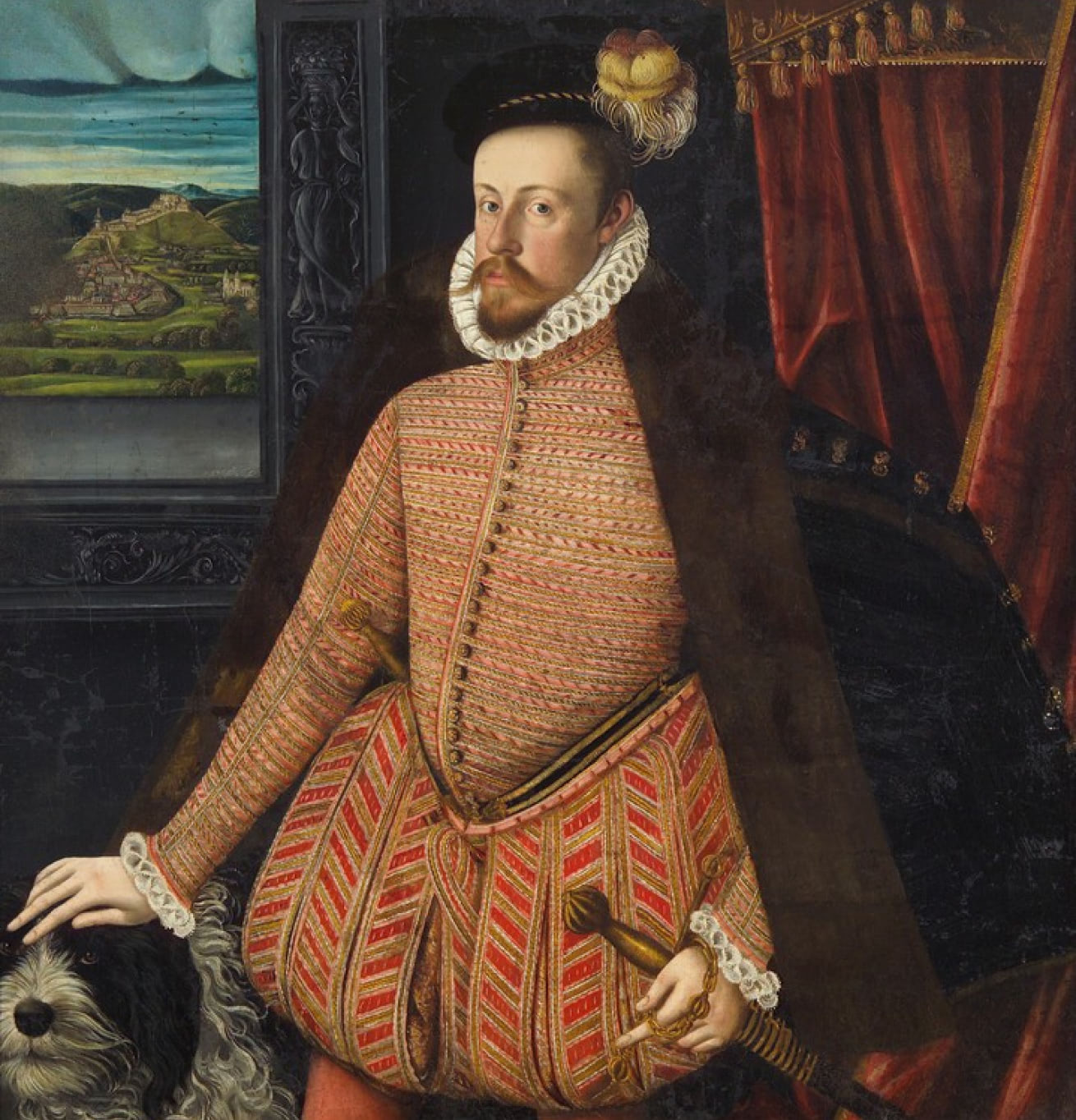

Archduke Charles II, oil on canvas (kept at: Kunsthistorisches Museum Wien, Bilddatenbank.)
1576
First records
On the advice of the Bishop of Trieste, Nicolò da Coreto, and Franc Jurko, who was the manager of the Bishop’s Karst horse stud farm, Habsburg Archduke Charles II decided to turn the Bishop’s dilapidated village mansion into a stud farm that would provide an ample supply of horses for civilian and military purposes.
Archduke Charles II, oil on canvas (kept at: Kunsthistorisches Museum Wien, Bilddatenbank.)


Lipica postcard sent on 10 May 1910.
It shows the Old Castle, one of the first buildings built in Lipica (at the end of the 16th century). (The postcard is the property of collector Valentin Čuk from Senožeče.)
It shows the Old Castle, one of the first buildings built in Lipica (at the end of the 16th century). (The postcard is the property of collector Valentin Čuk from Senožeče.)
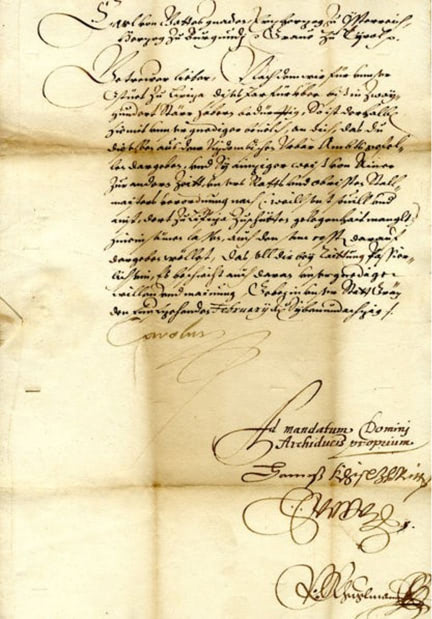

Graz, 15 February 1587. Austrian Archduke Charles writing to vidame Nicolai Bohnom that his stud farm in Lipica needs 200 “starov” (roughly 220 hectolitres) of oats, due to lack of pasture, which he should request from the urbarial office (original kept by: ARS, Vidame Archive)
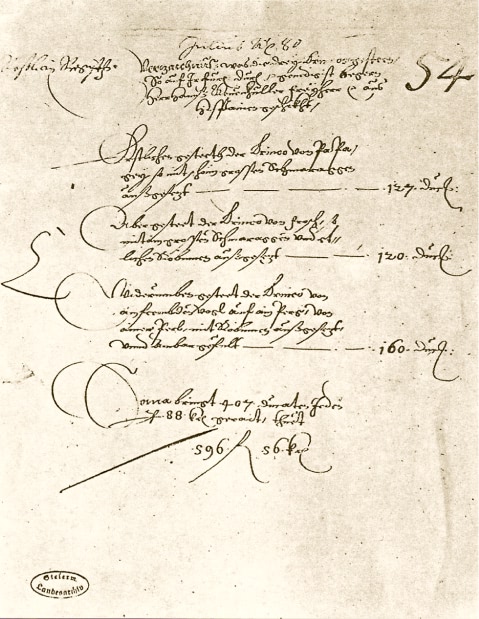

Invoice from 1580 for the purchase of the first three Spanish stallions (source: Ivo Mihelič, Otroci burje, Lipica in lipicanec)
1580
Archduke Charles II, third son of Habsburg Emperor Ferdinand I, signed the contract on the acquisition of the Lipica estate on 19 May 1580. Franc Jurko became the first manager of the Stud Farm.
1581
As soon as the Stud Farm was founded, 24 broodmares and six studs were bought in Spain. They paid 3,693 guilders for the purchase.
1585
The completion of all essential buildings, water reservoirs and watering places for horses. To protect the horses from wild beasts, they built a high stone wall around the yard and bought watchdogs.
1587
Austrian Archduke Charles writing to vidame Nicolai Bohnom that his stud farm in Lipica needs 200 “starov” (roughly 220 hectolitres) of oats, due to lack of pasture, which he should request from the urbarial office.
1594
The Stud Farm’s management purchased Jurij Božič’s adjoining estate, situated on the right of today’s entrance from Sežana, for 600 florins. Today, this is the location of the golf course.
1595
30 young horses from Lipica were taken to the Archduke in Graz.
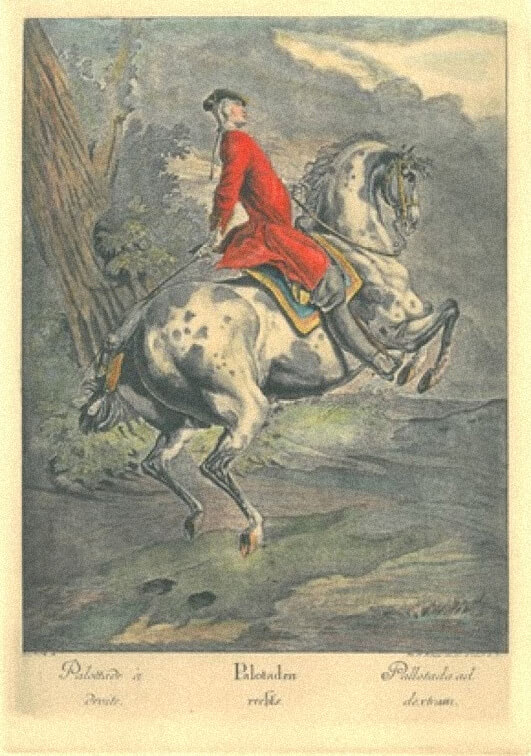

Postcard with a Lipizzan Horse Foto: tempelfarms.com
1619-1705
Under the rule of Austrian Emperor Leopold I, Lipica reached one of its first peaks. In 1703, they started building Velbanca, now the oldest, most eminent and most beautiful stable for breeding studs at the Lipica Stud Farm.
Postcard with a Lipizzan Horse Foto: tempelfarms.com


Lipica in the year 1858
1629
In order to provide enough hay, the senior stable master, Mansfeld, rented the Jurišič mountain (now Jurešče) for Lipica.
1619 -1705
Successors of Habsburg Archduke Charles II, Emperors Ferdinand II (1619–1637) and Leopold I (1658–1705), further accelerated the breeding of horses in Lipica, and added new buildings. The Stud Farm flourished, and the number of horses grew.
1689 -1705
The famous painter, Johann Georg de Hamilton, spent some time in Lipica, and was so impressed by the Stud Farm that he dedicated as many as 72 paintings to it. They also include paintings of indigenous Karst horses.
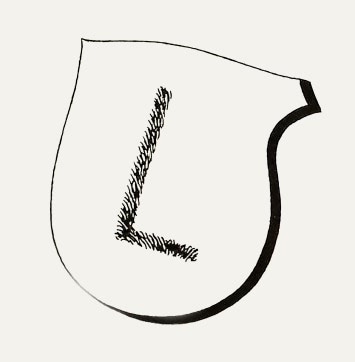

Sign of the Lipica Stud Farm (H. H. Izenbarth, Emil M. Birer: Lipicaner – carski konj, Kranj 1986, introductory page).
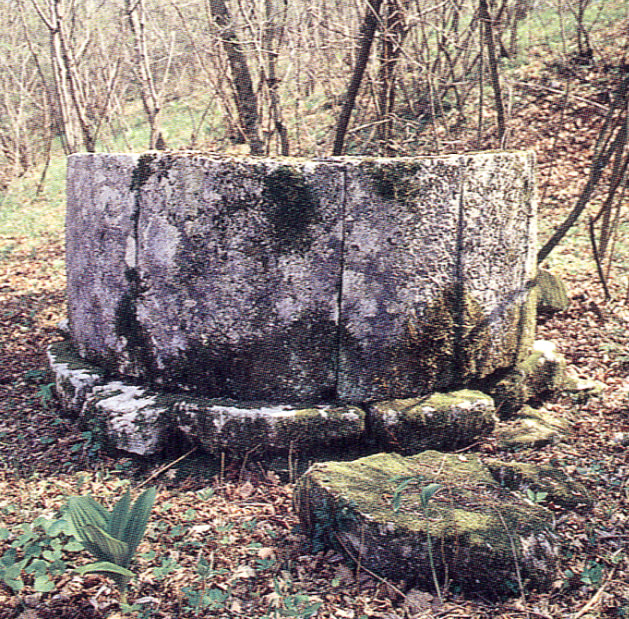

The original inhabitants of Lipica, seven families, were moved to what is now the village of Laže, near Senožeče, in the mid-17th century. They were mostly charcoal burners. The well that these emigrants had built before their departure was named the “laženska štirna” (The Well of Laže), in their memory.
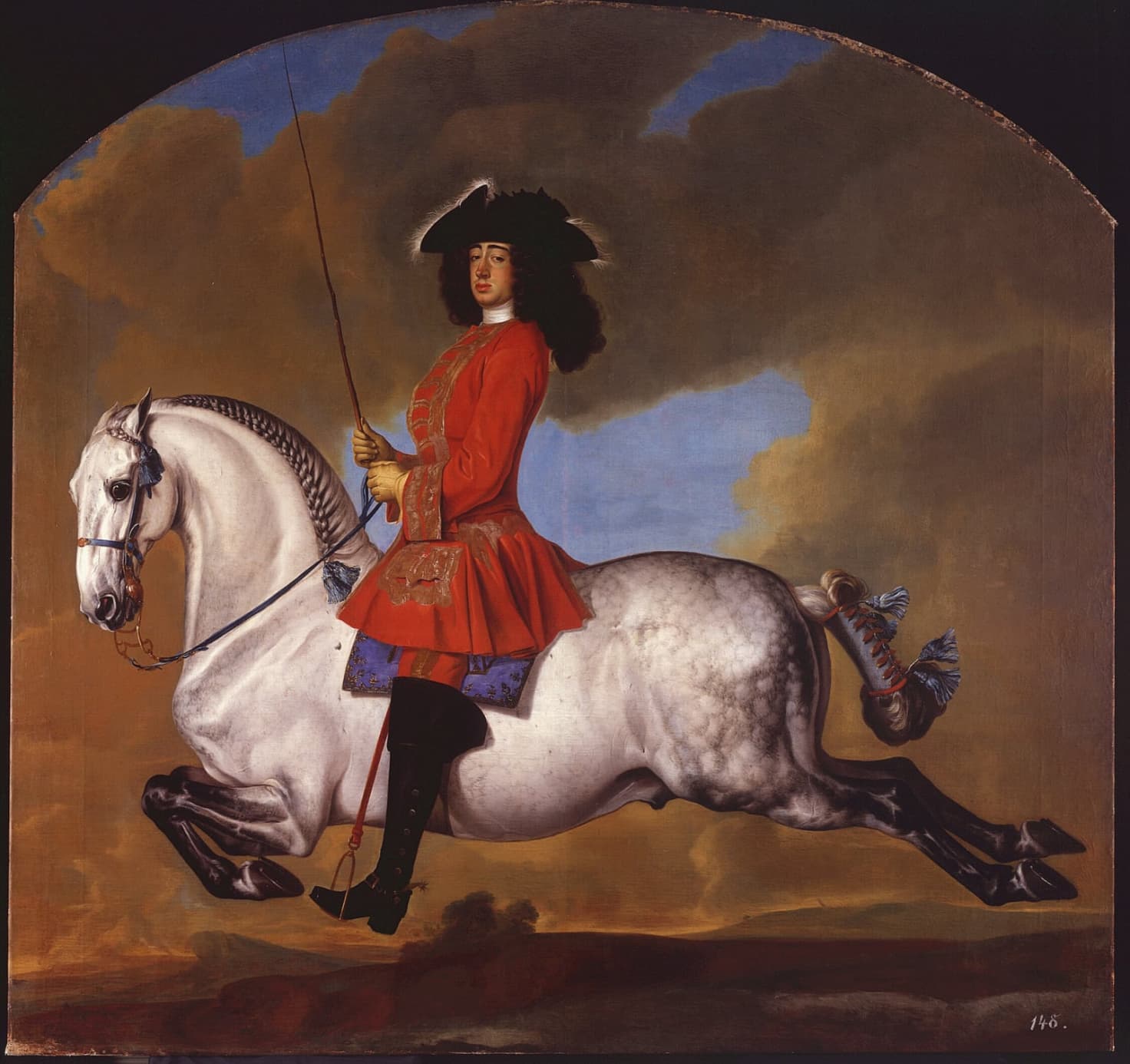

Johann Georg de Hamilton (1672–1737) Prince Adam Franz zu Schwarzenberg (1680–1732) on a Lipizzaner, Performing a Capriole (c. 1705–1715) Oil on canvas Copyright: The Weiss Gallery
1705-1711
Under the reign of Emperor Joseph I, new stables, staff quarters, and a chapel with a chaplaincy were built. Development also began on the meadows, roads, and the surrounding forests.
Johann Georg de Hamilton (1672–1737) Prince Adam Franz zu Schwarzenberg (1680–1732) on a Lipizzaner, Performing a Capriole (c. 1705–1715) Oil on canvas Copyright: The Weiss Gallery
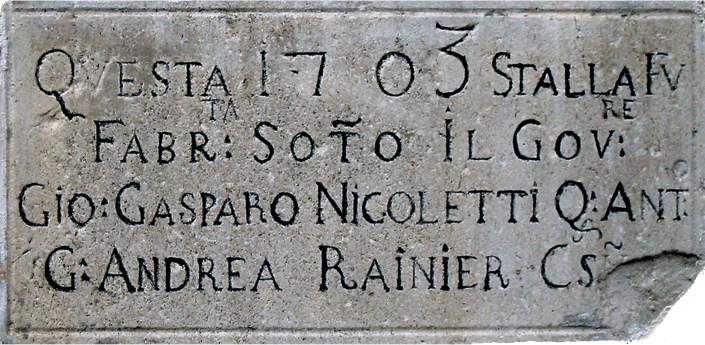

Inscription on the right side of the entrance to Velbanca saying that its construction began in 1703 and ended in 1705 (photo: Lipica Stud Farm archive)
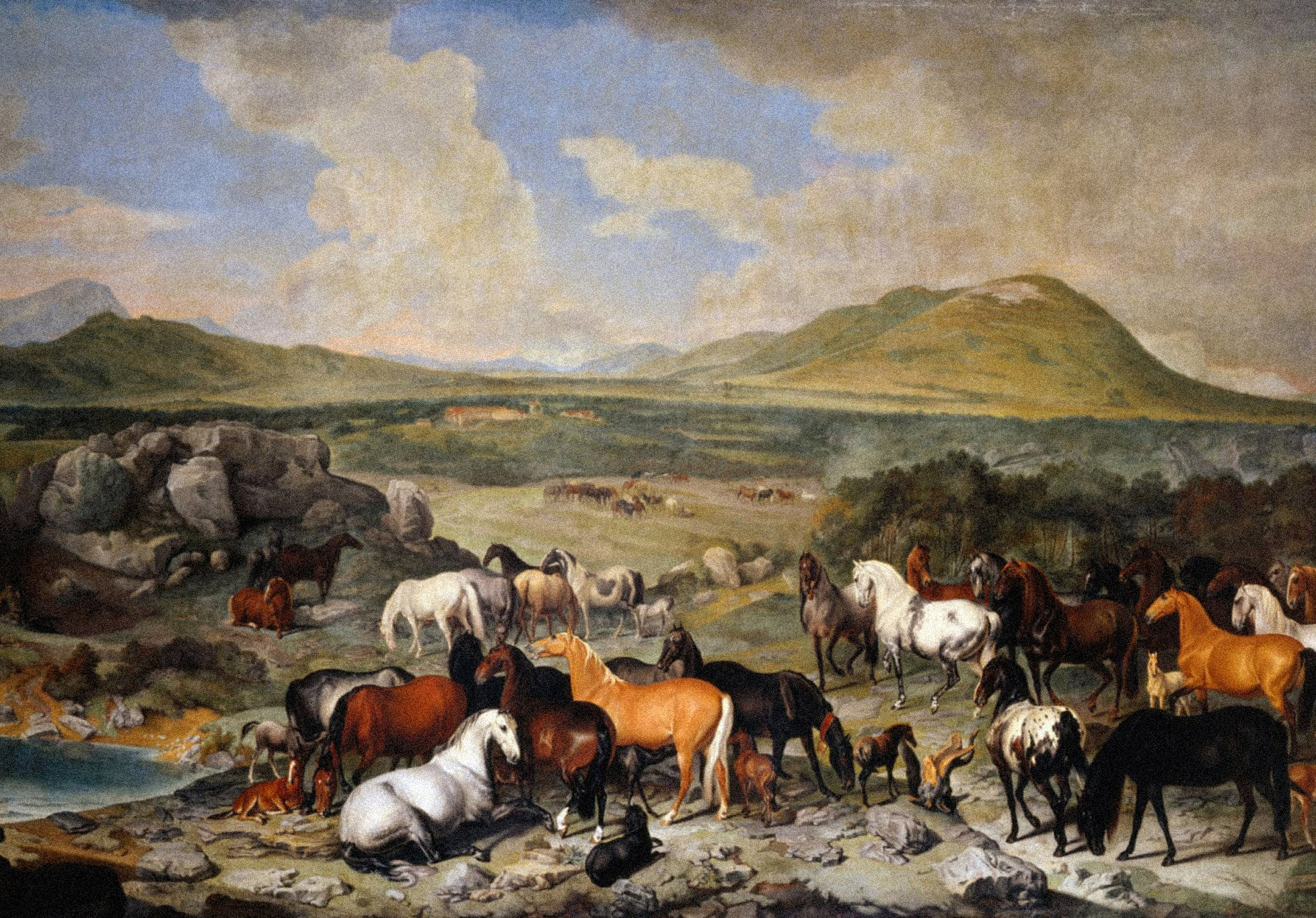

Kaiserliches Gestüt zu Lipizza am Karst (1727) Johann Georg de Hamilton (1672–1737) Oil on canvas (reproduction held in the old annex of the Stud Farm)
1711-1740
The reign of Emperor Charles VI was also very important for the development of Lipica.
Kaiserliches Gestüt zu Lipizza am Karst (1727) Johann Georg de Hamilton (1672–1737) Oil on canvas (reproduction held in the old annex of the Stud Farm)
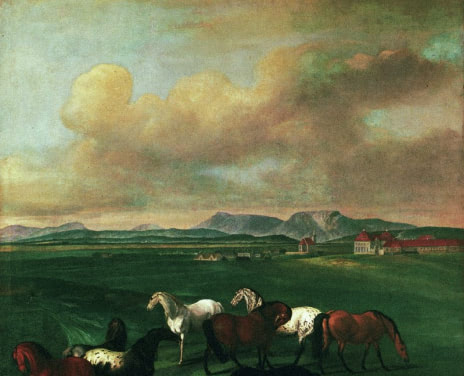

Detail – Lipica Stud Farm, c. 1720s The Imperial Stud With Lipizzaner Horses Johann Georg de Hamilton (1672–1737)
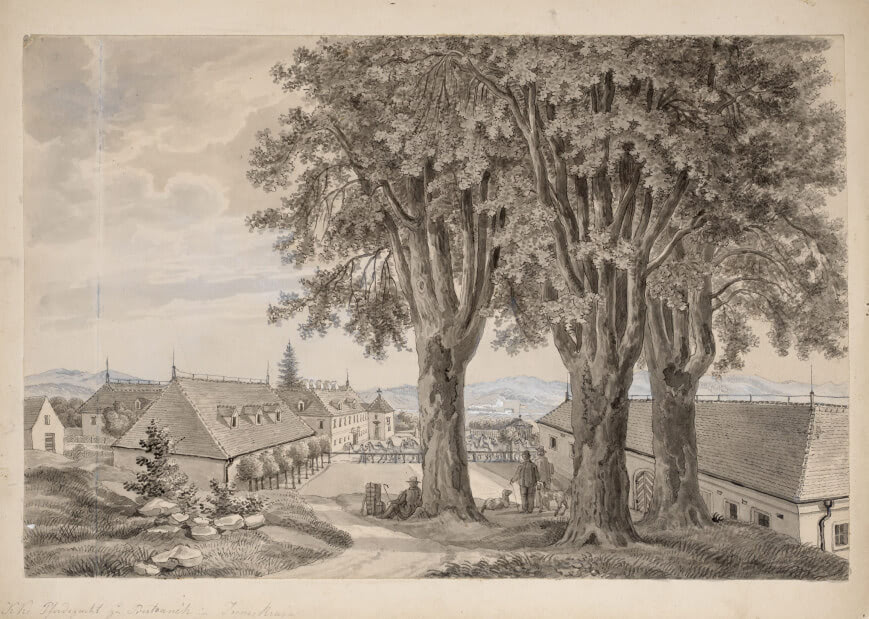

Franz Kurz zum Thurn und Goldenstein, Konjušnica pri Prestranku, mid-19th century, pen and ink wash drawing with Indian ink and white tempera, 189 x 278 mm, National Museum of Slovenia, Graphics Cabinet, Inv. No. R-475
1711
The Stud Farm developed to the extent that the initial estate was no longer sufficient to produce enough hay. The Stud Farm’s manager, Maks. pl. Oblak, the later Baron Wolkensperg, took over the lease of the former estate of the Auerspergs in Postojna.
1720
Nine years later, the Stud Farm bought the estate of the Auerspergs for 8000 florins.
1727
New buildings were built in Lipica, a large grain warehouse among them.
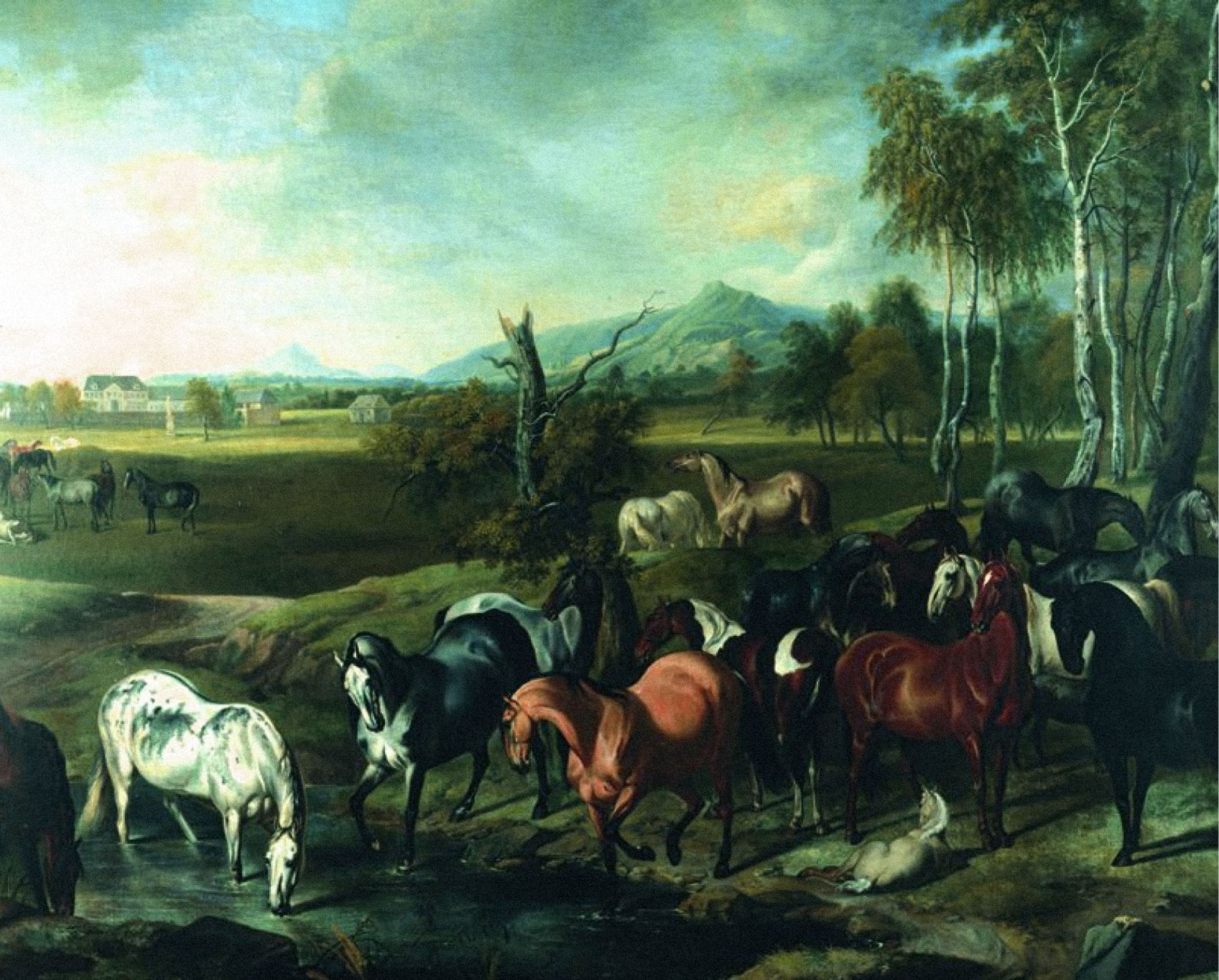

The Postojna estate in the picture by Johann Georg de Hamilton from 1725 (the original is at the KHM in Vienna, Gemäldegalerie; a reproduction is at the Manor – the Lipica Stud Farm’s administrative building)
1728
The Stud Farm in Lipica expands through the purchase of the estates at Prestranek, Poček, and Bile, and the lease of the estate at Škulje.
The Postojna estate in the picture by Johann Georg de Hamilton from 1725 (the original is at the KHM in Vienna, Gemäldegalerie; a reproduction is at the Manor – the Lipica Stud Farm’s administrative building)
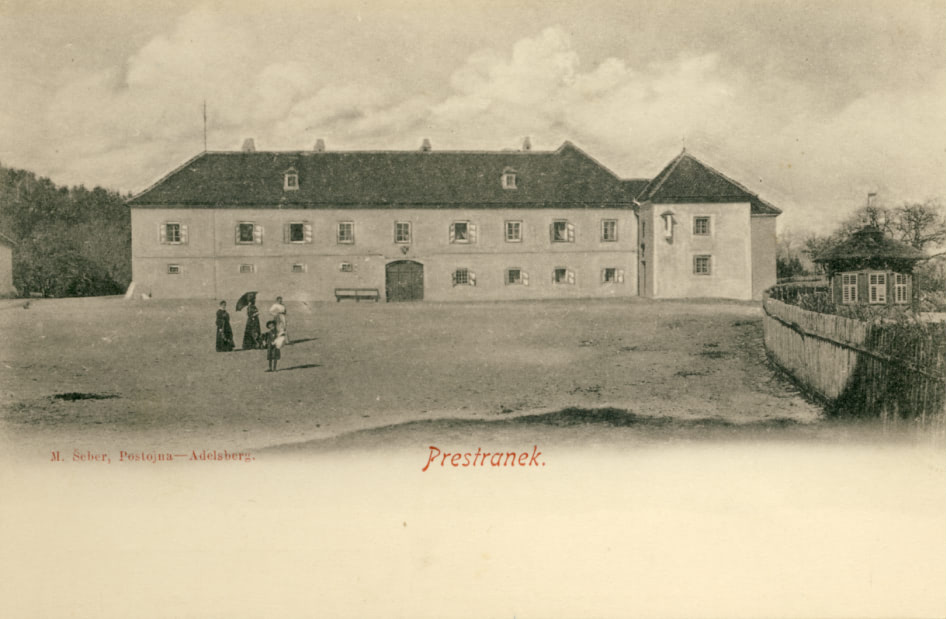

Postcard, photo by Maks Šeber from Postojna, early 20th century; the postcard is the property of collector Valentin Čuk from Senožeče.
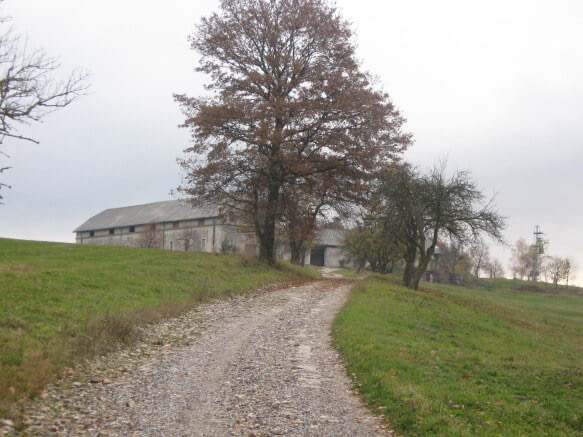

The Škule estate becomes the property of the Lipica Stud Farm in 1728 (photo by: Davor Kernel)


The Škule estate becomes the property of the Lipica Stud Farm in 1728 (photo by: Davor Kernel)
1729
The construction of a riding school to supply horses for court ceremonies started this year in Vienna, and the school soon gained world fame.
1733
54 stallions from Lipica performed at the inauguration of the Vienna court riding hall.
1740 -1780
The Lipizzan breed, as it is known today, was developed during the reign of Empress Maria Theresa. Maria Theresa’s husband, Francis Stephen, Duke of Lorraine, took great interest in horse breeding. Out of the 22 studs from the 18th century, today’s descendants belong to just four breeding lines: Pluto (Denmark, 1765), Conversano (Italy, 1767), Favory (Austria, 1779) and Neapolitano (Italy, 1790).
1785
The Emperor sent a commission to Ljubljana to assess the country’s economic condition, and to decide on the continued existence of Lipica in order to save money. The commission proposed that the Stud Farm be moved to Holič, Galicia, where the Kopčany stud farm was already located, but the Emperor rejected the proposal.
1790 -1792
During the reign of Emperor Leopold II, the stables and other farm buildings at Poček and Ravnik were adapted, and a new watering place was built.
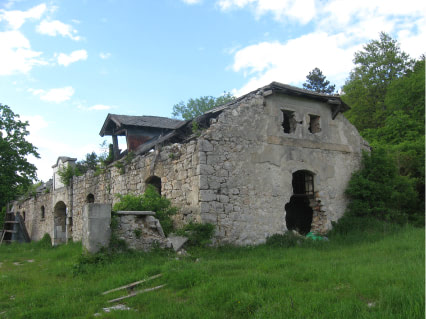

Remains of the Poček manor house (photo by: Davor Kernel)
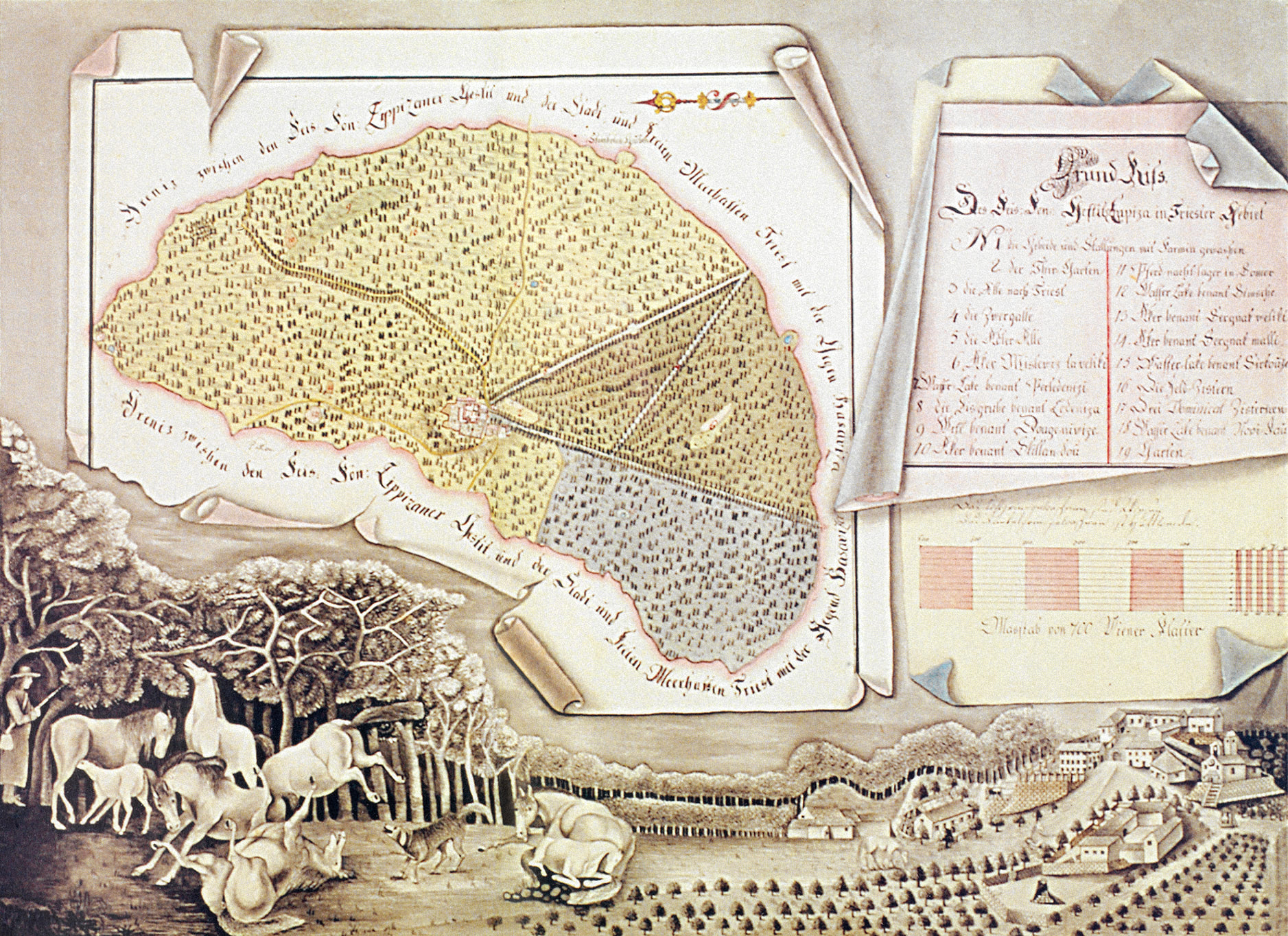

Karst court stud farm in Lipica in 1780, plan of the area showing the central structures and horses (Kugler and Bihl, 2002: plan kept at the Haus-, Hof- und Staatsarchiv in Vienna)
1797-1815
In this period, the Stud Farm was affected by a series of hardships and calamities.
Karst court stud farm in Lipica in 1780, plan of the area showing the central structures and horses (Kugler and Bihl, 2002: plan kept at the Haus-, Hof- und Staatsarchiv in Vienna)


All the relocations of the Lipizzan herd between 1796 and 1943 (Ivo Mihelič: Otroci burje – Lipica in lipicanec, Ljubljana 2004, p. 48)
1796
Austrian army columns marched across the Karst, turning Lipica into a military encampment. The following year, as the French army was advancing through Carinthia and Styria, the Stud Farm prepared to leave.
1796 -1797
On 22 March, four columns of almost three hundred horses fled to Székesfehérvar in Hungary, through Vojnik near Celje, Ormož, Čakovec, Szala Egerszeg, Sümeg and Veszprém. After the Treaty of Campo Formio was signed on 17 October 1797, the herd was returned safely to Lipica.
1802
The French soldiers brought a lot of destruction to Lipica. Therefore, they rushed to repair the damage upon their return. Soon afterwards, in 1802, Lipica suffered a major earthquake, in which many stables were destroyed and most of the best horses died.
1805
Due to the war between France on one side and Austria and Russia on the other, the Stud Farm first had to move to Đakovo in Slavonia, and then to the cameral estate Karád in Hungary. The horses left on 15 December 1805 and returned in the middle of May 1806.
1809 -1815
Following the Treaty of Schönbrunn, the town of Trieste and the region of Carinthia were annexed to France. As a result, the Emperor again had to withdraw the herd of 289 horses from Lipica to Pécsko in Hungary. They arrived there on 27 June 1809, and remained in Hungary until 1815. During the French occupation, the original studbook was lost.
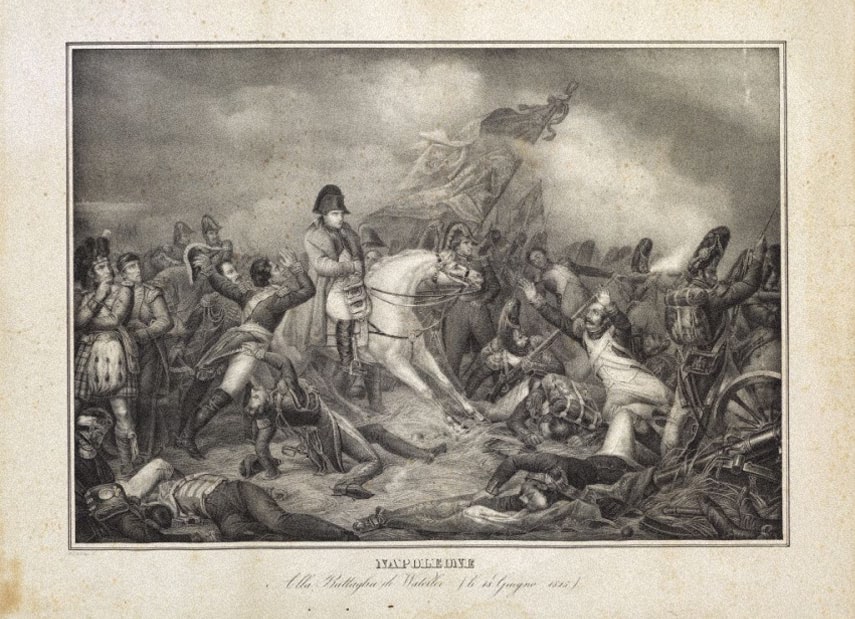

Napoleon on a white horse in the Battle of Waterloo, 1815. (National and University Library, Ljubljana)
1811
Napoleon gifted the Lipica Stud Farm to the Governor of Illyria, Marshal Marmont. The Marshal subsequently leased out the estate. What followed was the indiscriminate felling of the surrounding forests, in which the Lipica estate was almost completely destroyed.
1813
Napoleon was decisively defeated at the Battle of Leipzig from 16 to 19 October 1813, and had to leave Germany. After the Congress of Vienna (November 1814 – 9 June 1815), Lipica again fell under the rule of Austria-Hungary.
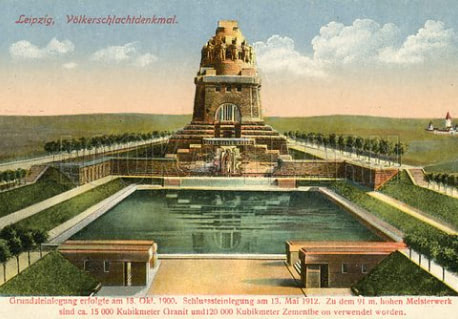

Postcard of the monument to the Battle of the Nations, as the Battle of Leipzig was later called
(Front© Stadtgeschichtliches Museum Leipzig)
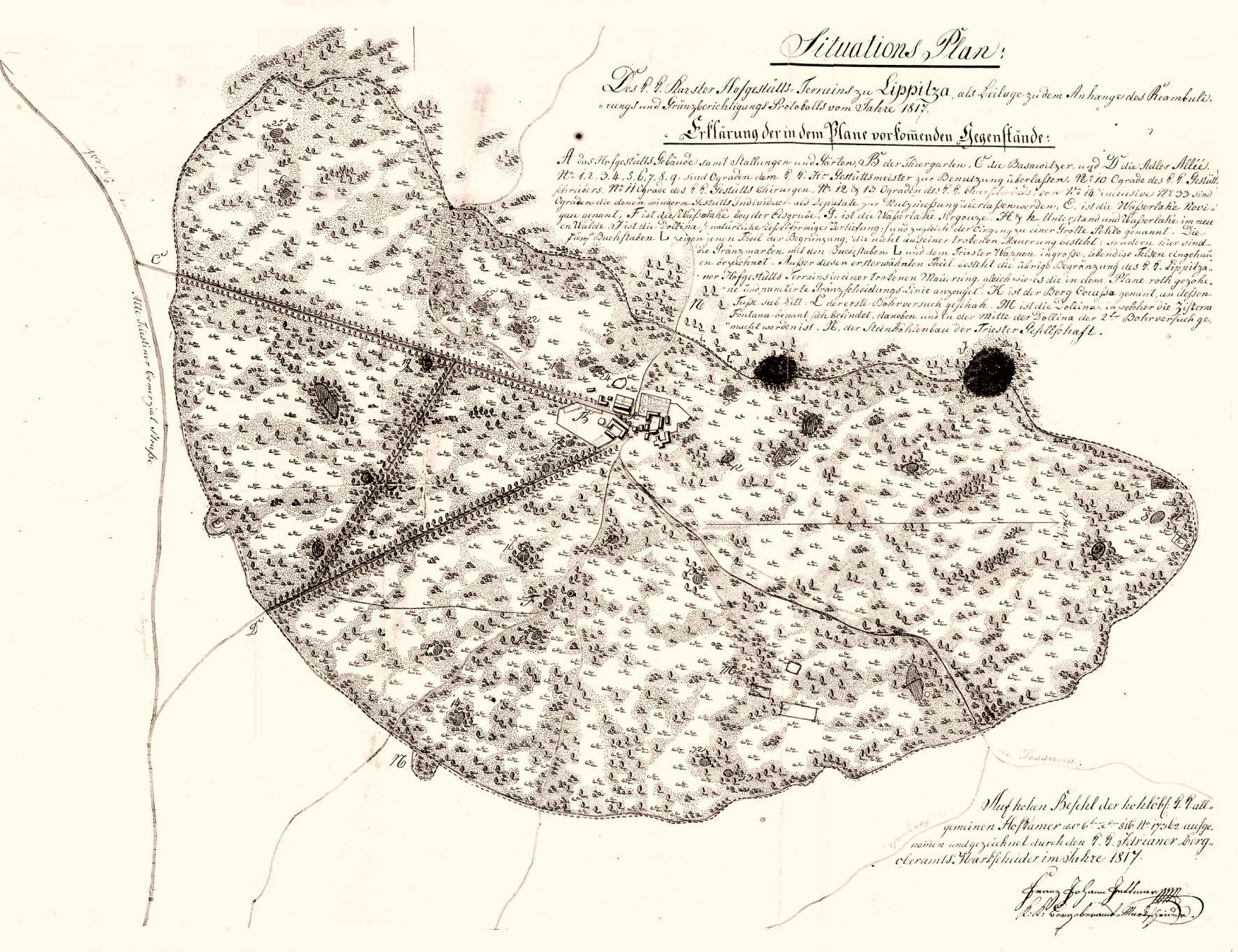

Cartographic representation of the Lipica estate in 1817, in which the Vienna and Trieste avenues are clearly visible.
1816-1880
The Arabian stallion Siglavy, born in 1810, was introduced to the herd. The fifth classical line of Lipizzan stallions originates from his descendants, and is still being bred today.
Cartographic representation of the Lipica estate in 1817, in which the Vienna and Trieste avenues are clearly visible.
The studbooks of the surviving horses were restored. These books were then kept in duplicate; the Stud Farm used the first copy as a working record, while the second was kept in the Hofburg Imperial Palace in Vienna. The oldest entries in the studbooks refer to horses born in 1810, and also contain notes on their progenitors. The oldest entry mentions the mare Golomba, born in 1738.
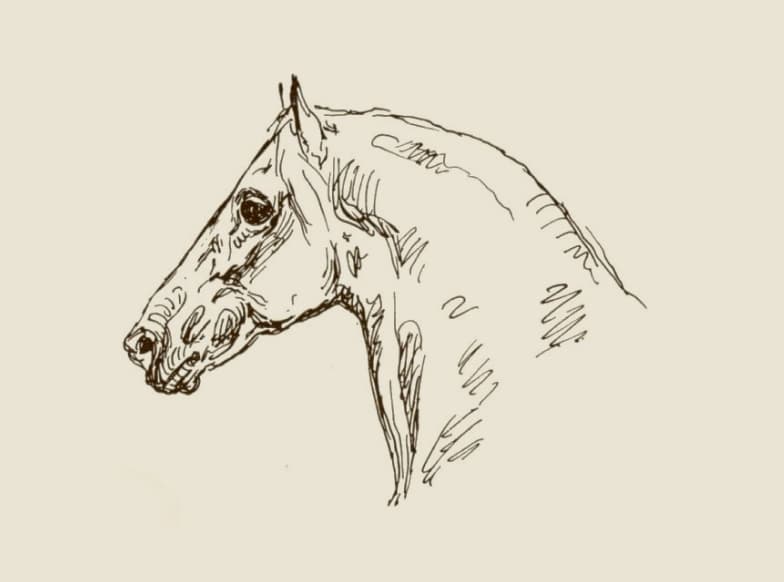

Syglavi or Siglavi. Illustration by: Emil Kotrba
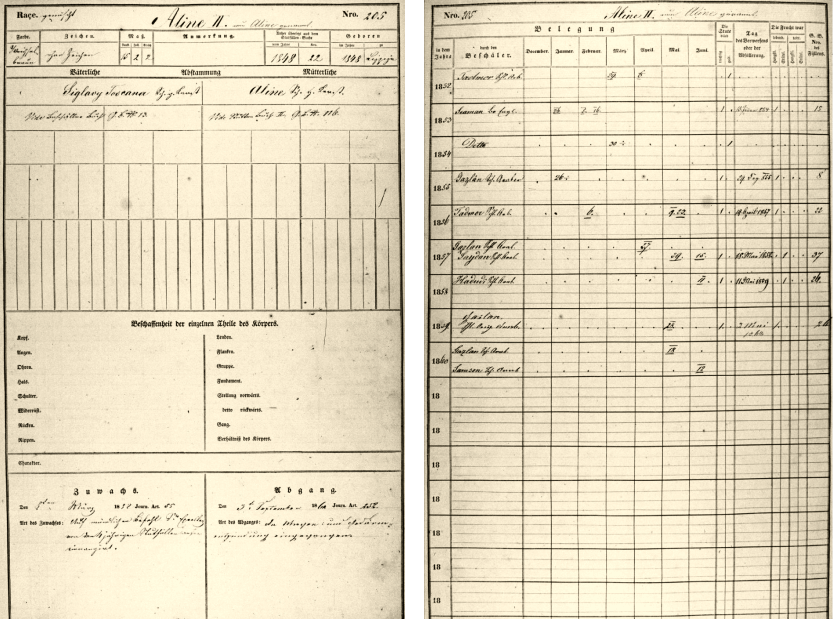

Example from the Lipica Stud Farm studbook
At the order of Emperor Francis II (1792–1835), the breeding stock of the Stud Farm was enriched by new bloodlines of predominantly Arab origin. The Arabian mares gave birth to two out of the sixteen classical families: Mercurio (1806), Djebrin (1824). Among many stallions introduced in the 19th century the stallion Maestoso X (Austria, Kladruber) deserves particular attention, as he was breeding in the Mesöhegyes Hungarian military stud farm. He arrived at Lipica in 1837 to form the sixth parallel classical line of stallions, which started with a stallion named Maestoso Buda (Lipica, 1821).
Among many new mares of predominantly Oriental origin, another two out of the sixteen classical families were formed: Gidrane (1841) and Theodorosta (1870).
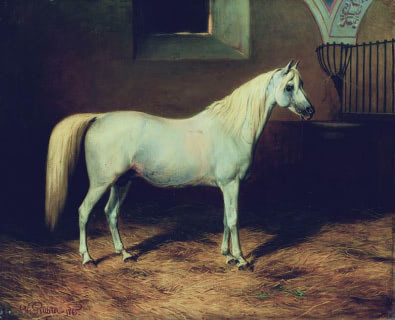

Hadudi Lipizzaner Horse Johann Georg de Hamilton (1672–1737)
1826
The studs were relocated to Lipica following the closure of the Kopčany stud farm. As Lipica was located relatively far from the capital of the empire, transport costs were high, and the management of the Stud Farm proposed to move the Stud Farm somewhere closer to Vienna.
1848
Emperor Francis Joseph I decided to keep the Stud Farm in Lipica. The renovation of the farm was managed by Count Karel Grünne, a general who lived in Lipica until 1875.
1852 -1856
That year, three large stables for broodmares were built in Lipica, as well as a riding hall, a horseshoe workshop, a stable for sick horses, a feed warehouse, and an apartment for a veterinarian. The first storey of the administrative building was converted to apartments, and a new well and a watering place were built. Special instructions were produced, e.g. a plan for growing meadows and pastures.
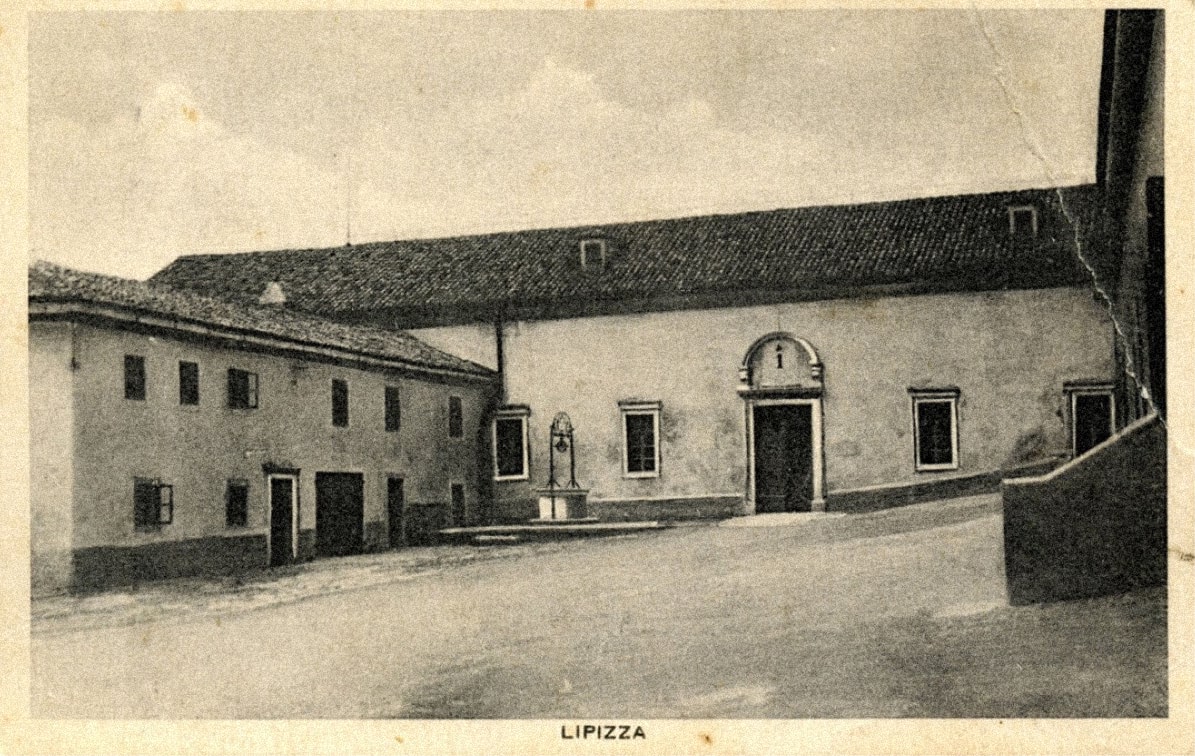

Old postcard of Lipica
1880
The Stud Farm celebrated its 300th anniversary on 19 May. To mark the occasion, the office of the grand master of the state stables in Vienna published the book entitled “Das K. u. K. Hofgestüt Lipizza (1580 – 1880)”.
On Whit Monday in 1880, Lipica celebrated the 300th anniversary of the Stud Farm. Attendees at the ceremony included the Prince of Thurn and Taxis, a cavalry general, Court Councillor Ivoy, Court Secretary Auer, and the head of the Stud Farm Mr Vieten… The attendees were first welcomed in Slovenian by the chaplain of the Lipica Stud Farm, followed by a holy mass. Afterwards, the Prince of Thurn and Taxis gave a speech and unveiled two memorial plaques, and then there was a banquet. Later, they all moved to the Prestranek estate, where a similar event was held.
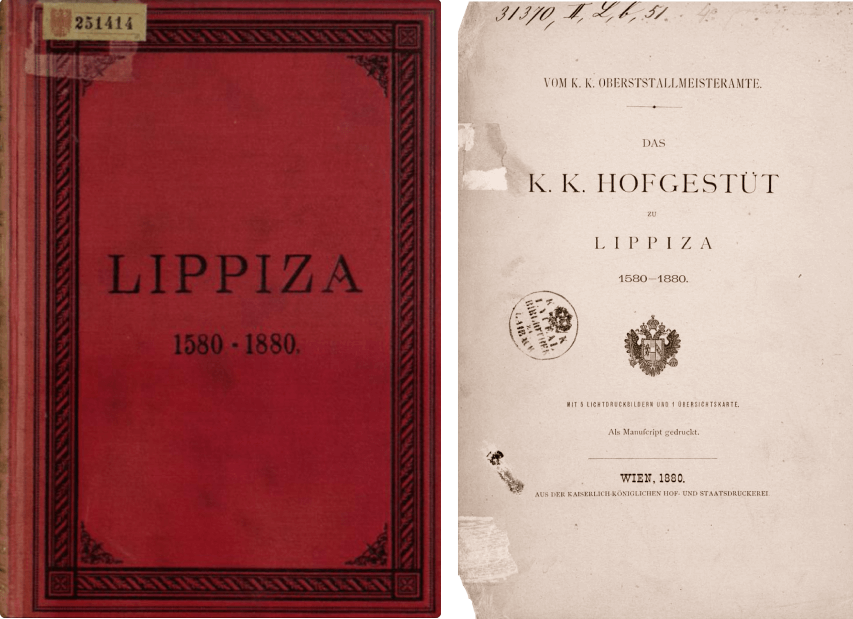

Cover and first page of the book Das K. K. Hofgestüt zu Lipizza 1580 – 1880, (by author E. A. Brehm)
1883 – 1899
The construction of new buildings and further development of the Stud Farm. An apartment for the chaplain was built next to the church. It offered a classroom for children.
1892
Emil Finger was appointed the last Austrian manager of the Lipica Stud Farm. He began extensive land improvement in Lipica and Prestranek, and the renovation of the stables for care and training.
1893
New working rules were produced for the Stud Farm. According to these rules, the residential building in Bile was redesigned, a horse infirmary stable and a cistern were built next to it, and in Lipica, the mangers in the stables that were too high were lowered; the wooden mangers were removed, and from then on, the horses were fed from the ground.
1894
The last mention of the number of horses until World War I is from the end of 1894. At the time, Lipica had 5 studs, 4 three-year-old stallions, 51 Lipizzan horses, 30 Lipizzan – Arabian horses, 2 purebred mares, and 13 workhorses. Together with Prestranek, the total was 295 horses, of which 263 were for breeding and 32 were workhorses.
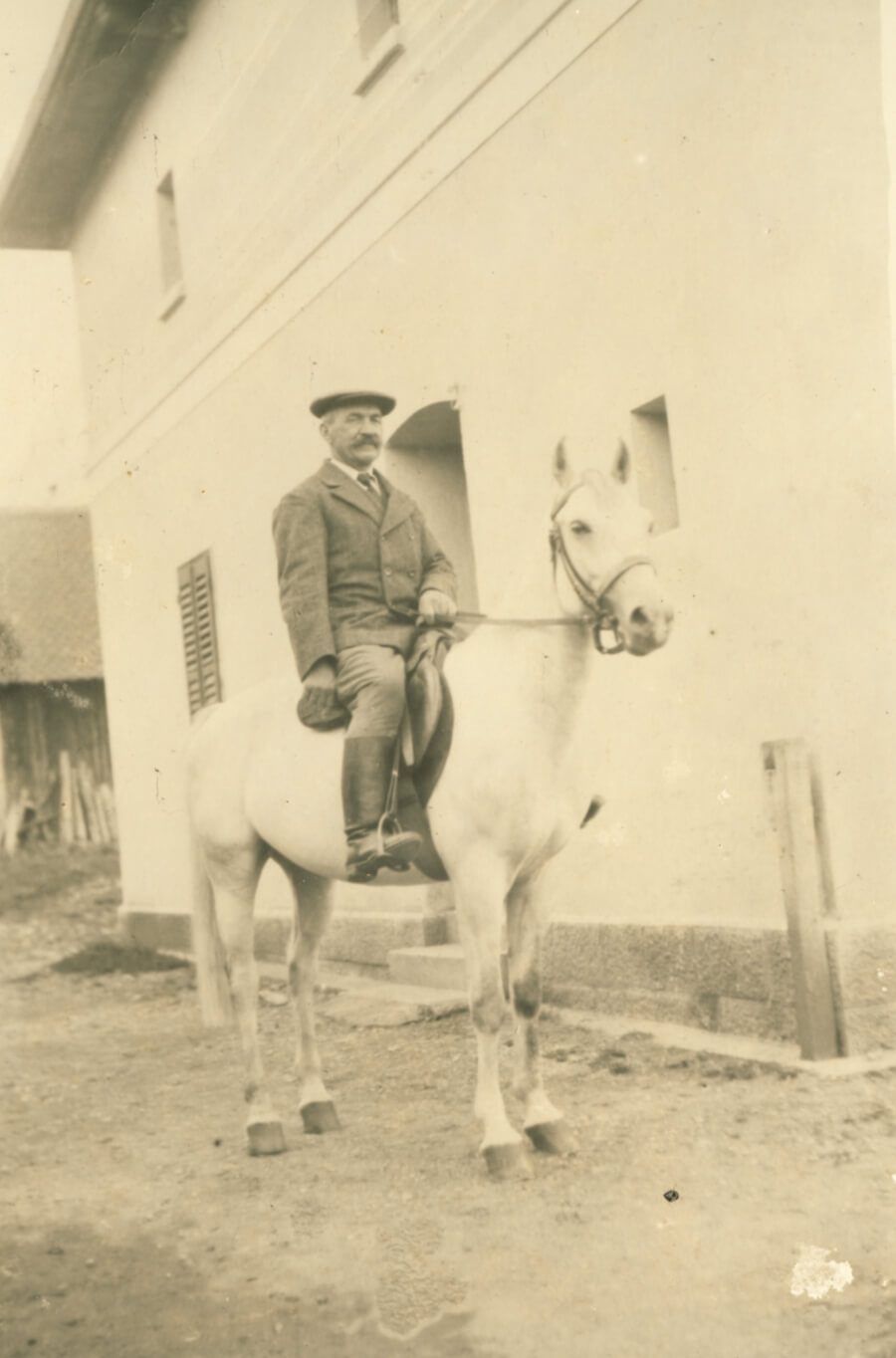

Andrej Stopar Sr., photographed outside the Stopar apartment in Lipica, early 20th century (property of: Marija Stopar Štefan)
1899
That year saw the construction of the Jubilee Stable, which was intended for young horses in training. Built on the 50th anniversary of the rule of Emperor Francis Joseph I, it featured apartments for grooms on both sides.
Andrej Stopar Sr., photographed outside the Stopar apartment in Lipica, early 20th century (property of: Marija Stopar Štefan)
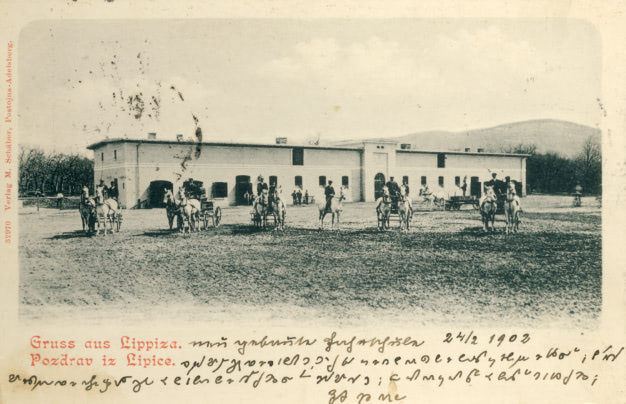

Lipica Stud Farm, postcard sent 24 February 1902 (property of Valentin Čuk)


Andrej Stopar, a coachman from Lipica who drove the lords of the manor to mass in Basovizza, early 20th century (property of Marija Stopar Štefan)


Watering place in the Lipica Stud Farm, postcard sent in 1910 (property of Danilo Oražem)
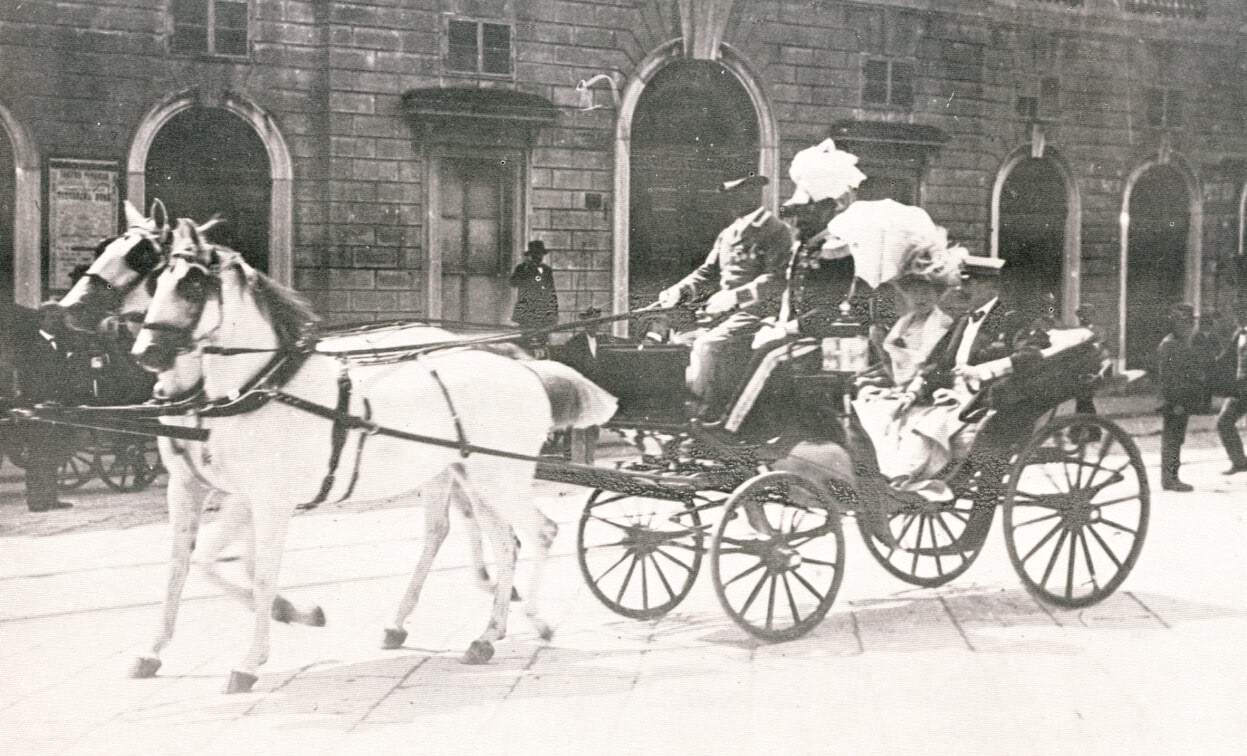

Franz Ferdinand and his wife in Trieste, before the assassination in Sarajevo (from Miramare, Trieste) (property of Danilo Oražem)
1914-1918
World War I (1914–1918)
On 18 May, when Italy entered the war, the Emperor ordered the immediate evacuation of the Lipica herd. The core herd had to abandon its homeland for the fourth time; the last train left the station on 29 May.
Franz Ferdinand and his wife in Trieste, before the assassination in Sarajevo (from Miramare, Trieste) (property of Danilo Oražem)
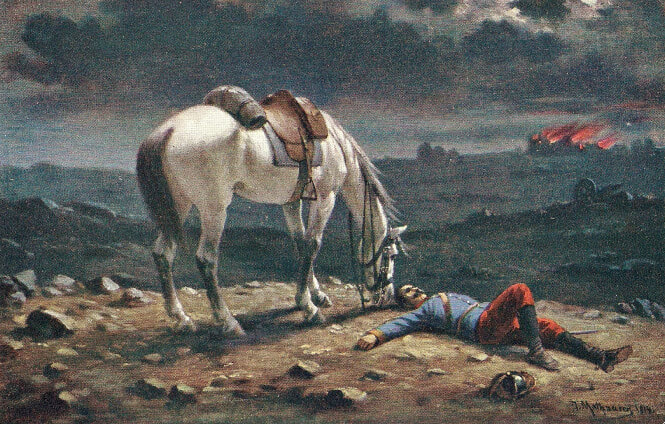

A Lipizzan horse during World War I (propaganda postcard, property of collector Mitja Močnik)
1918
The end of the Imperial Royal Court Karst Stud Farm Lipica.
At the end of the war, an international committee held negotiations on the return of part of the herd – which had been transferred to Laxenburg – back to Lipica, which at that time was occupied by Italy. Lipica welcomed back 109 horses (2 stallions, 42 mares, and 65 foals). The Italians used the acquired breeding stock to renew breeding in Lipica. Together with the breeding stock, Italy also received the second copy of the studbooks, which had been kept at the Vienna Hofburg from 1816.
1918
After 339 years, the Imperial Royal Court Karst Stud Farm Lipica ceased to exist. Three new Lipizzan horse stud farms were created in its wake (Lipica, Piber, Kladruby).
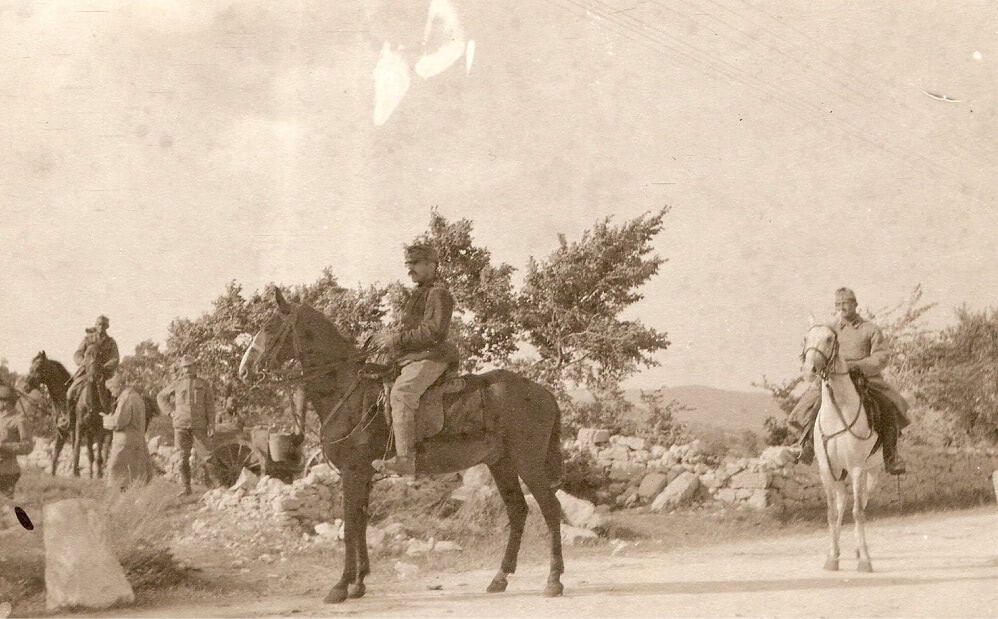

A Lipizzan horse among soldiers on the road between Renče and Bilje during World War I (photo, property of collector Mitja Močnik)


A Lipizzan horse among soldiers on the road between Renče and Bilje during World War I (photo, property of collector Mitja Močnik)
1919
On 16 July, the Italian commission in Lexenburg took over the Lipizzan horses, which included 6 lines of stallions and 17 families of mares.
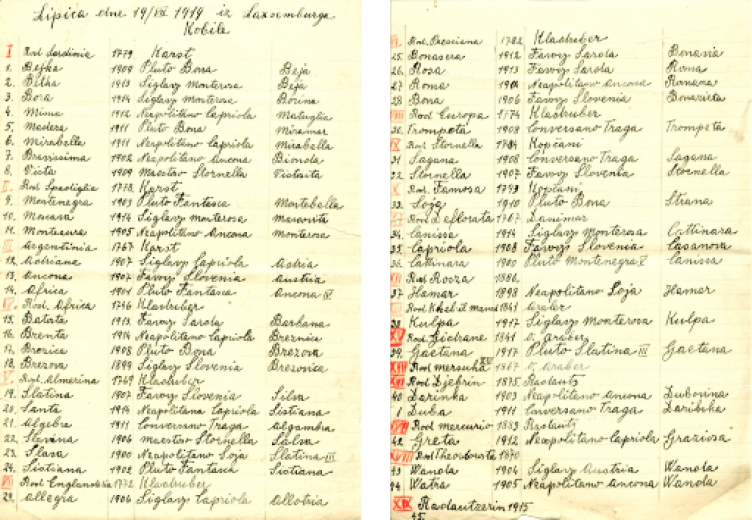

List of mares on 19 July 1919, as they were returned from Laxenburg, manuscript by Andrej Stopar Jr. – first and second page (property of: Marija Stopar Štefan)


Lipica Stud Farm employees, c. 1940/41 (property of Danilo Oražem)
1923-1940
On 1 July, the Lipica Stud Farm was transferred to the War Department, which made it subordinate to its horse breeding and veterinary service, both administratively and professionally. The Stud Farm’s main task was to increase the number of broodmares.
Lipica Stud Farm employees, c. 1940/41 (property of Danilo Oražem)


Women with rakes – day labourers who cleaned the meadows in the 1930s (property of Marija Stopar Štefan)


Prestranek, c. 1923 (property of Danilo Oražem)
1926
The stallion Favory Noblessa, whose mother was a Kladruber, is brought from Lexenburg. Some of the descendants had iris discolouration, which is unacceptable for a Lipizzan horse.
1927
That year, Flower, an Arabian stallion, was bought. This stallion, or the subsequent attempts with Arabian stallions, did not produce the desired results.
1935
Many original Lipizzan mares were given to the army to serve as riding horses, and half-bred Arabian stallions and purebred English mares were brought to Lipica.
1939
Prestranek, Bile, and Poček were transferred to the military office for fortifications.


Cycling race at the Lipica Stud Farm, 1940. Only Stud Farm employees were allowed to participate (property of Danilo Oražem).


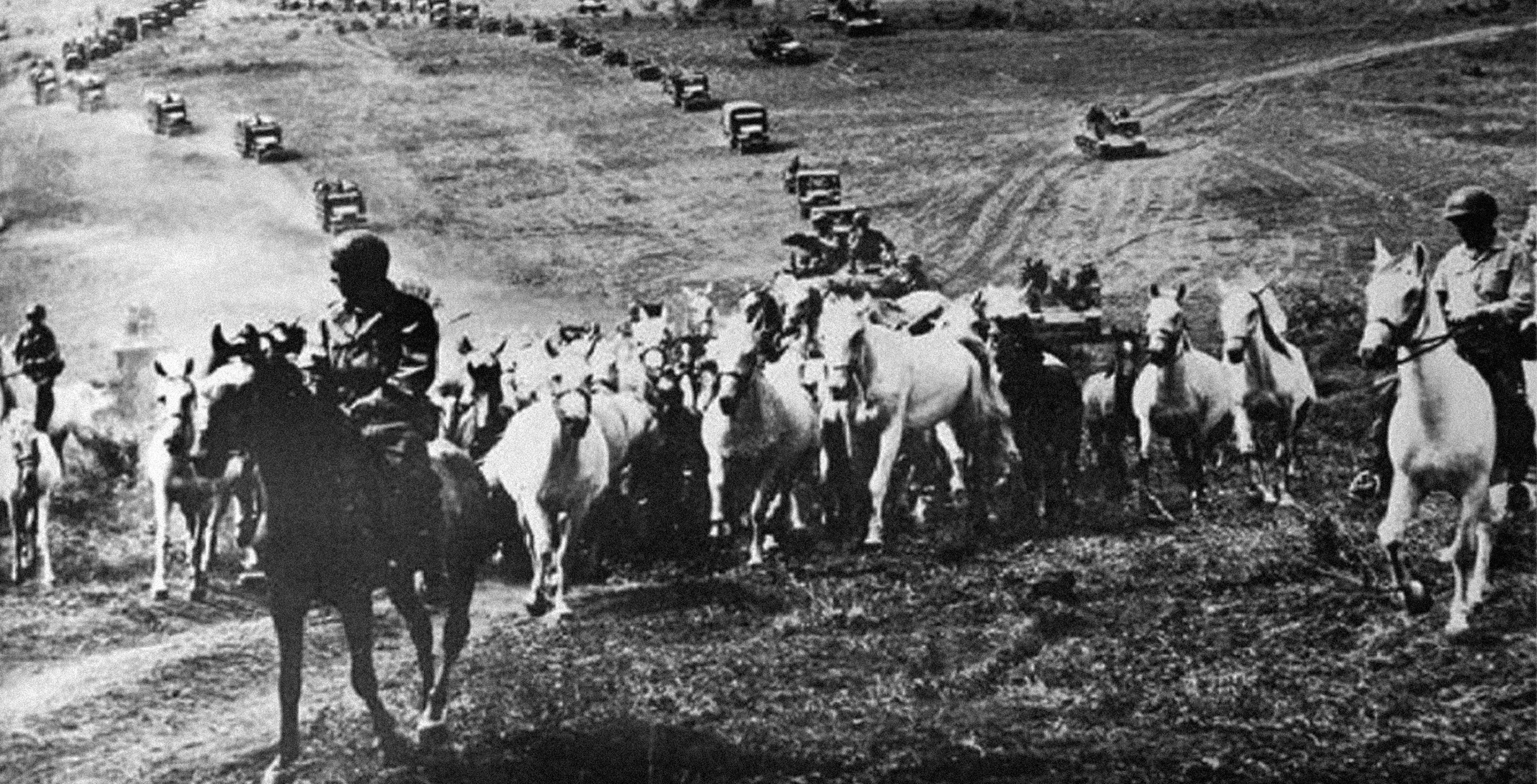

The rescue of the Lipizzan horses in 1945.
1939-1945
World War II (1939–1945)
Following the capitulation of Italy (8 September), Lipica was occupied by German troops. On 16 October of that year, the Germans withdrew the horses from Lipica by truck to the train station in Sežana, where they boarded a train and were taken to Hostau in the Sudetenland in Czechoslovakia. A total of 179 horses were taken, specifically 6 studs, 56 broodmares, and 117 foals born between 1940 and 1943. 22 people from Lipica accompanied the horses.
The rescue of the Lipizzan horses in 1945.


Rudolf Frankovič in Hostau (b. 26 February 1922). The photo was taken for the needs of the German authorities – as a document evidencing that he came to Hostau with horses (property of Marija Kljajič).
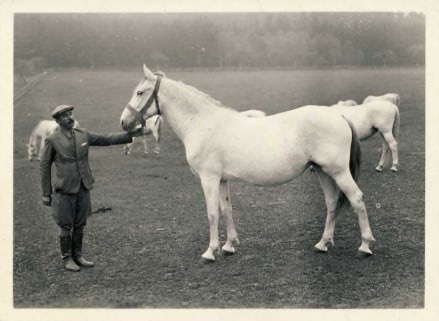

Andrej Stopar Jr. in Hostau with the horse Capriola, 1943 (property of: Marija Stopar Štefan)
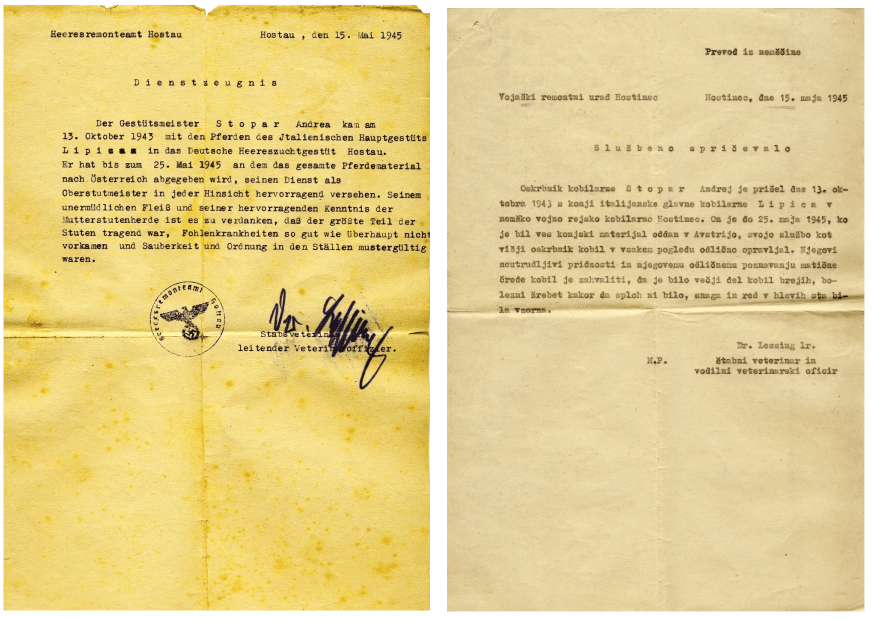

Official certificate and translation from German (later) – commendation for excellent work in Hostau in the Sudetenland (property of Marija Stopar Štefan)
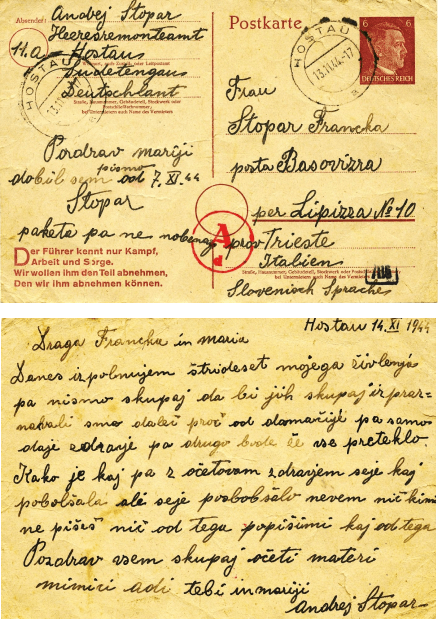

Postcard from Hostau – first page, 14 November 1944 (property of: Marija Stopar Štefan)
1945
After the Yalta Conference, Czechoslovakia came under the control of the Soviet Union. The German garrisons were disbanded, and the displaced inhabitants were left to the squalor of post-war devastation, meaning that the breeding stock of the centuries-old Lipizzan Stud Farm was also at risk.
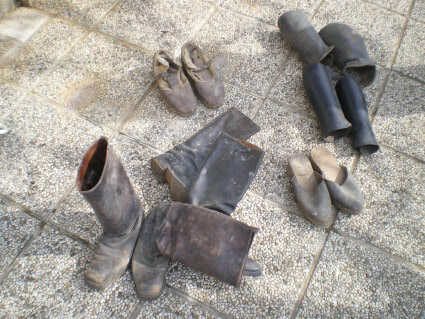

Some of the equipment (shoes, boots) used by Andrej Stopar on the trip with the Lipizzan horses from Lipica to Hostau in Czechoslovakia (property of Marija Stopar Štefan)
The head of the US Cavalry Intelligence, Colonel Reed, proposed to General Patton to carry out a swift military operation to save the horses. U.S. High Command denied the request for an operation on territory controlled by the Red Army. General Patton took the initiative, and on 28 April, the Americans conducted a daring military operation in which they transferred the horses to an area governed by the Allied Forces. Only a few days after, on 7 May, Colonel Podhajsky, Head of the Spanish Riding School, pleaded with General Patton to protect the stallions which had been transferred from Vienna to St. Martin.
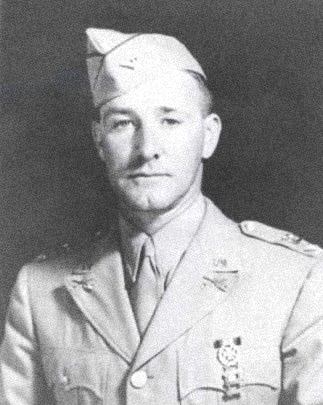

COL Charles Hancock Reed
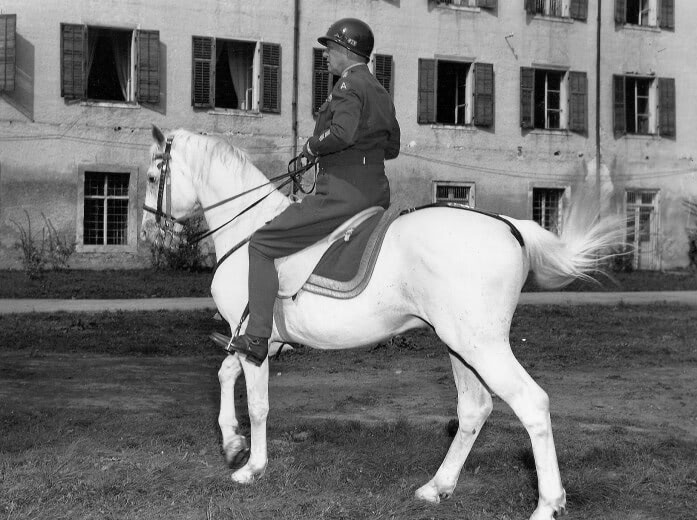

General Patton riding the Lipizzan horse “Favory Africa”, which Hitler had personally picked out to be presented to Emperor Hirohito. The horse formerly belonged to the riding school of Vienna. It was confiscated by the Germans, and later returned by the Americans.
Yugoslav troops occupied Lipica on 29 April, but had to withdraw as early as 12 June. The Anglo-American army turned the Stud Farm into a depot for trucks and tanks. The riding hall was converted into a bar, and Velbanca into a cinema. 4500 m3 of trees were cut down for firewood.
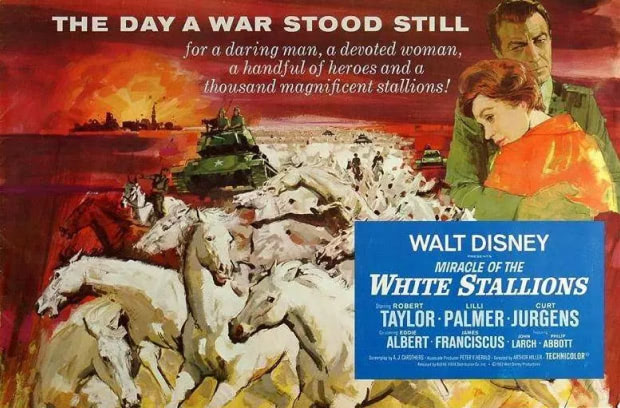

The return of the Lipizzan horses to the Spanish Riding School in Vienna was the theme of the Disney film from 1963, “The Miracle of the White Stallions”.
1947
Following the withdrawal of the Allied Forces, Lipica became part of the Federal People’s Republic of Yugoslavia. It only received 11 horses from the herd which was confiscated by the Germans during the war. The studbooks and 80 horses (5 stallions, 42 mares, and 33 foals) were assigned to Italy on 18 November.
1948
The Italians first took the horses to Pinerolo in Piedmont, and then in early 1948, moved them to the Montelibretti military stud farm near Rome. The studbooks were used here until 1952. Today, they are kept as an important part of the heritage in the Italian state stud farm of Lipizzan horses in Monterotondo near Rome.
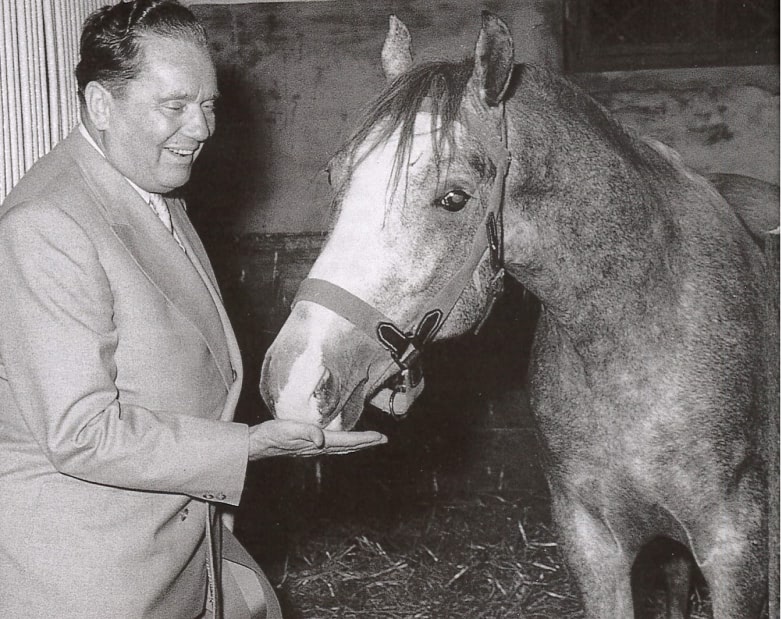

Josip Broz Tito at the Lipica Stud Farm in 1964
1949-1960
Povojno obdobje
The Federal Ministry of Agriculture and Forestry allocated 54 Lipizzan horses to the Lipica Stud Farm, comprising four stallions, four younger stallions, and 39 broodmares.
Josip Broz Tito at the Lipica Stud Farm in 1964
1950
The Lipica Stud Farm passed from federal to republican administration. The Stud Farm lost its estates in the vicinity of Prestranek, and a large number of its best studs and broodmares.
1952
The Department of Haute École and Dressage was established in Lipica. At its helm was the renowned Russian dressage trainer, Akarov.
1953
The Lipica Stud Farm lost its status as a state institution in the decentralisation process, and fell under the jurisdiction of local and people’s councils. These councils were not interested in preserving the Stud Farm, and were planning to shut it down. Later, the then president, Josip Broz Tito, used his personal influence to keep it running.


Josip Broz Tito at the Lipica Stud Farm in 1964
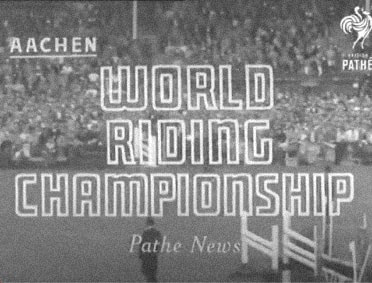

Television broadcast of the 1956 competition in Aachen
1956
The first appearance on the international stage. Alfonz Pečovnik, with his mare Thais IX, performed successfully at the international tournament in Vienna, and one year later in Aachen.
1958
Lipica was taken over by the company Jadran Sežana, which covered the losses of the Stud Farm in the following decade. In the 1960s, Lipica opened up to the public, and thus the foundations for its tourism development were set. As the costs mounted, Jadran Sežana disposed of the Stud Farm by transforming it into the Horse-breeding Institute of Lipica. The number of horses decreased, and the activities focused mainly on the development of tourism.
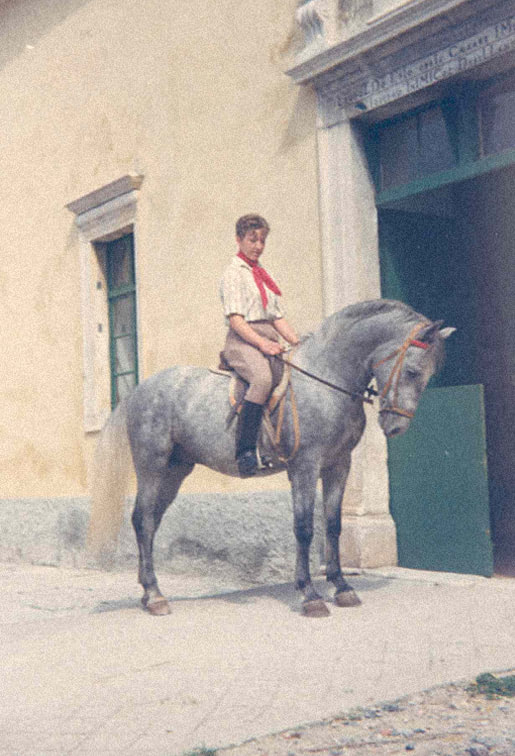

A female rider in 1967 (property of: Kristina Umek Marušič)
1963
The Stud Farm had only 59 horses left, nine stallions and 31 mares, while 24 mares and fillies were used for natural service. In the following years, breeding recovered, and the Stud Farm started opening up to tourism.
A female rider in 1967 (property of: Kristina Umek Marušič)
1971
To accommodate the increasing number of visitors each year, Hotel Maestoso was built, and a dressage programme for visitors was launched.
1972
In the following year, the Ministry of Agriculture cancelled the grant to the Stud Farm, and in the same year, the grant from the then republican budget was also cut. A decade of self-management, a planned budget, and intensive construction followed. In this period, a large and a small riding hall were constructed, three riding arenas, a stable with a bridging facility and featuring a riding hall, a stable for private horses, hay barns, a hippodrome, and apartments for the employees. These developments dramatically altered the historical appearance of Lipica.
1974
The first international tournament in dressage was organised. Lipica was in dire straits because of the cancelled government support. Upon acceptance of Tito’s patronage on the 400th anniversary, the communist government tasked the Stud Farm with the construction of a new hotel, altering Lipica’s historical appearance.
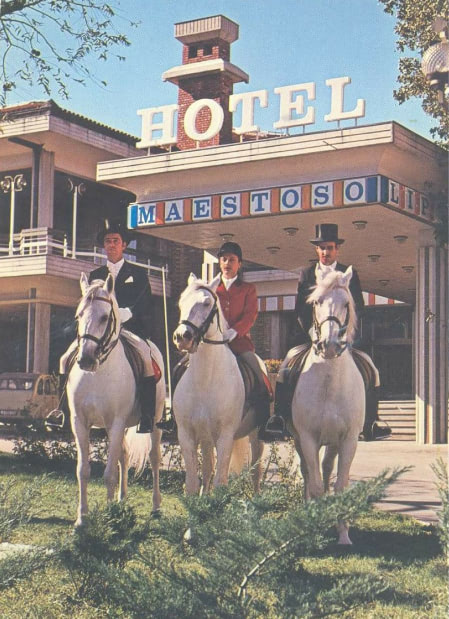

Lipica riders outside Hotel Maestoso (property of: Kristina Umek Marušič)
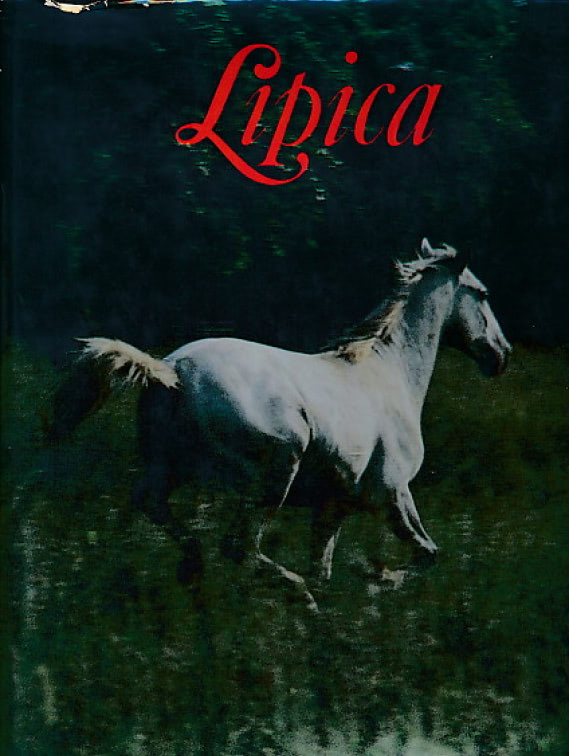

One of the better books on this subject by Milan Dolenc was published on the occasion of the 400th anniversary of the Lipica Stud Farm
1980
The construction of Hotel Klub was completed, and Lipica celebrated its anniversary. The representatives of all Lipizzan stud farms, and breeders, attended the central event celebrating 400 years of the stud farm.
The horses from the Spanish Riding School from Vienna performed. In the same year, a CHIO (Concours Hippique International Officiel) tournament was organised; Lipica also became home to the renowned avant-garde artist, Avgust Černigoj.
One of the better books on this subject by Milan Dolenc was published on the occasion of the 400th anniversary of the Lipica Stud Farm


The first and only performance of the Spanish Riding School at the Lipica Stud Farm, 1980 (Lipica Stud Farm archive).


Božidar Jakac visiting Lipica, 1980 (Lipica Stud Farm archive)
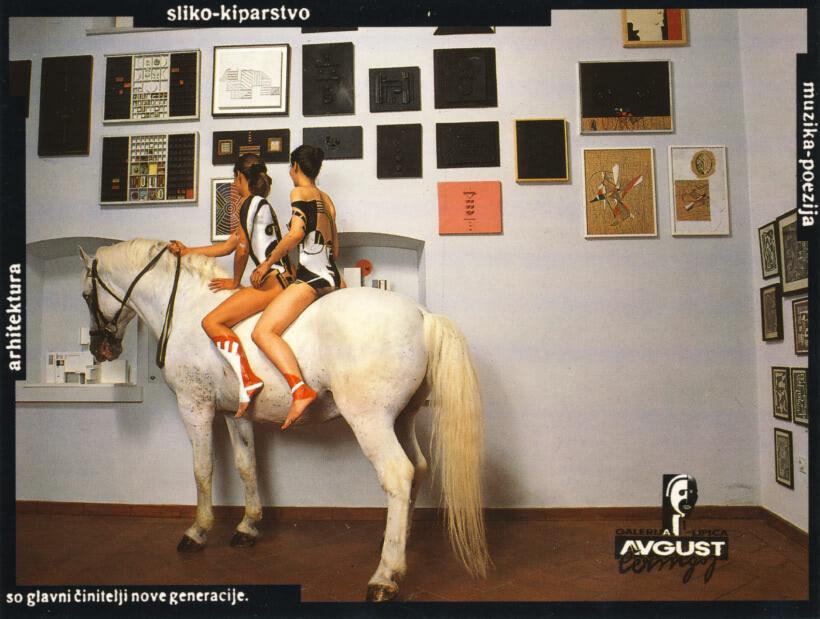

The Avgust Černigoj Gallery in Lipica
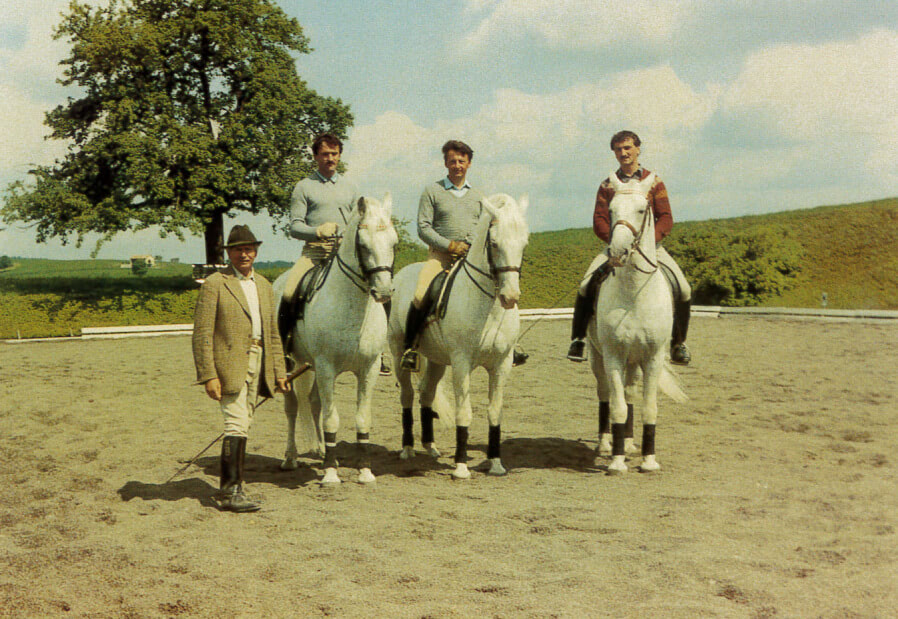

Preparations for the Olympic Games in Los Angeles (property of: Alojz Lah)
1984
Lipica Stud Farm’s riders, Alojz Lah, Dušan Mavec, and Stojan Moderc competed at the Olympic Games in Los Angeles. The team’s successful performance was the first Olympic appearance of riders from the former Yugoslavia in dressage. Their performance still remains the most notable performance of Slovenian riders at the Olympic Games, not only in dressage, but in all equestrian disciplines.
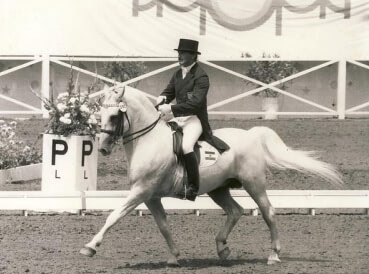

Alojz Lah at the Olympic Games in 1984 in Los Angeles
1986
The Lipizzan International Federation (LIF) was founded in Lipica. The August Černigoj Gallery was inaugurated and features some 1400 of his artworks. In the mid-1980s, the Stud Farm was again having financial difficulties, and its management decided to introduce some completely new activities into this precious and delicate cultural environment.
1991
The Slovenian War of Independence slashed the number of visitors. The herd decreased drastically. Losses mounted.
1993
The Lipica Stud Farm successfully organised the European Dressage Championship.
As Lipica’s financial situation was getting progressively worse, the Municipality of Sežana offered a helping hand. The Municipality undertook to assume the obligations of the transferred real estate, the herd of horses, and the August Černigoj Gallery, but was unable to provide sufficient financial resources.
1993
A government committee was established to draw up an act to regulate the Lipica Stud Farm. When the Lipica Stud Farm Act was adopted in 1996, the Lipica Stud Farm became a public institution owned by the Republic of Slovenia. In the same year, the Lipizzan International Federation (LIF) celebrated its tenth anniversary in Lipica.
1996
In the years after it became a public institution, the Stud Farm made significant progress. The architectural core of Lipica, which was under monumental protection, was renovated, and the herd was enlarged.
2000
In 2002, the Lipica Stud Farm was recognised as a breeding organisation holding the original studbooks of the Lipizzan horse breed.


Posestvo Ravne (foto: Davor Kernel)


The 425th anniversary of the Lipica Stud Farm (Lipica Stud Farm archive)
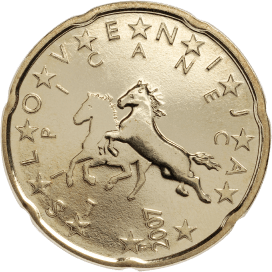

In 2007 Slovenia gets Euroand decides to put a Lipizzan horse on the 20-cent coin.
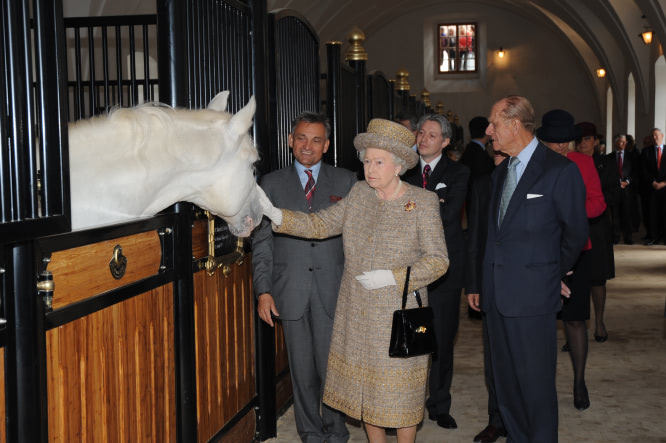

Queen Elizabeth II visiting the Lipica Stud Farm (Lipica Stud Farm archive)
2002
In 2002, the Lipica Stud Farm was recognised as a breeding organisation holding the original studbooks of the Lipizzan horse breed.
2005
The Government of the Republic of Slovenia adopted the 2002–2005 Lipica Stud Farm Protection and Development Programme.
2008
Queen Elizabeth II and Prince Philip visited Lipica on 22 October.
2010
In 2010, Lipica celebrated its 430th anniversary. The following year, the Stud Farm presented its heritage at the newly opened Lipikum Museum, and organised the FEI World Driving Championships for Ponies.
2014 -2015
The historic core and the estate of the Stud Farm were completely renovated. In 2014 and 2015, the Lipica Stud Farm opened practically the entire estate to visitors. The tree-lined avenues have been revitalised, and the historic core with the Manor has been reconstructed. The renovation was extended to the “na Borjači” Stables, the Jubilee Stable, and the so-called New Stable, as well as the necessary investments in municipal infrastructure. The total value of both projects was 6.6 million euros, and represented the largest investment in the Stud Farm in recent decades. The Republic of Slovenia co-financed the projects with European funds.
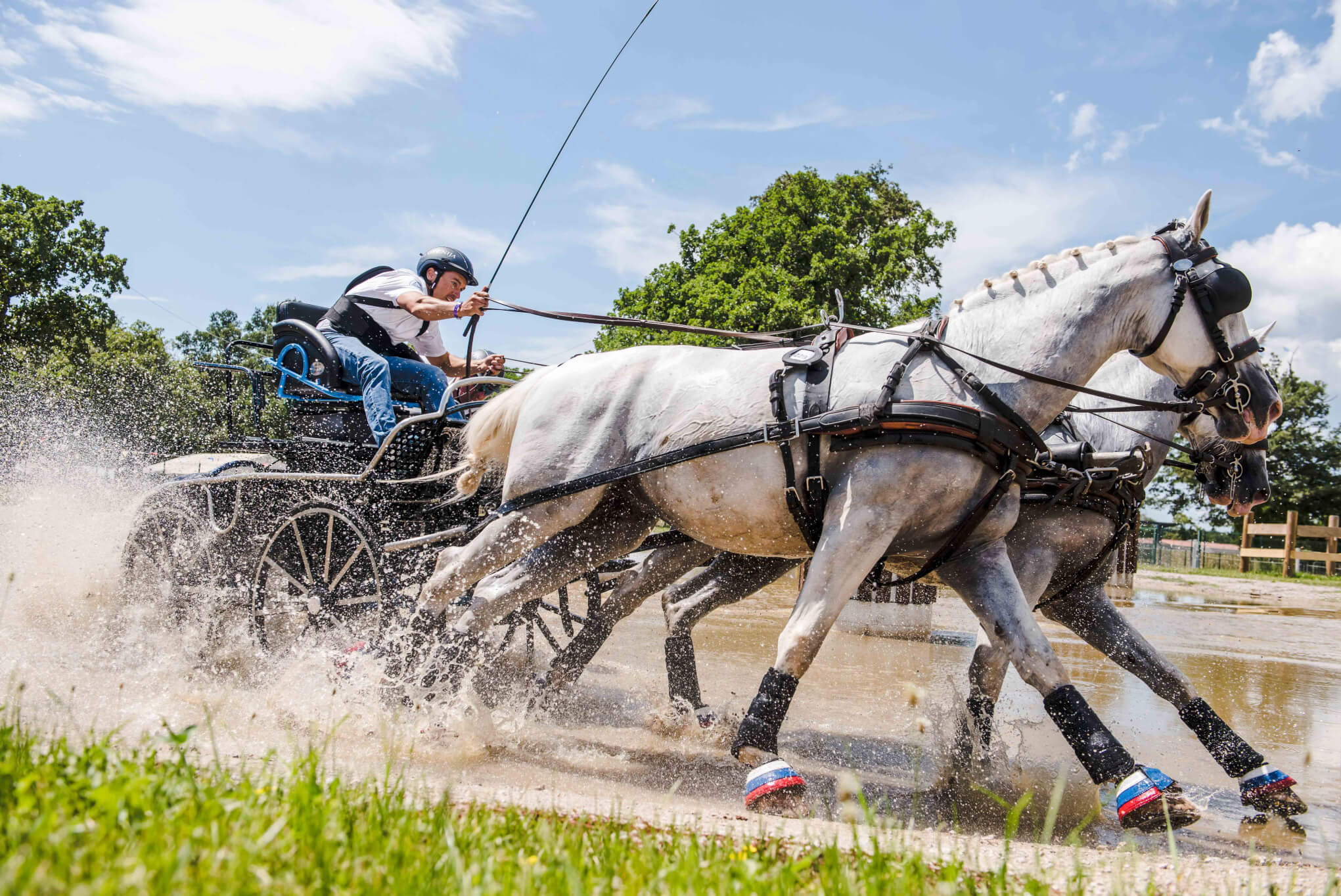

Driving Championship for Pairs, driver Miha Tavčar (Lipica Stud Farm archive)
2017
FEI World Driving Championship for Pairs.
At the renovated hippodrome, the Lipica Stud Farm organised the FEI World Driving Championship for Pairs in September 2017.
The Slovenian team was represented by Miha Tavčar, Klemen Turk, and Mitja Mahorčič, under the guidance of Coach Benjamin Aillaud. Driver Miha Tavčar won first place in the marathon, tenth place in the overall standings, and the International Lipizzan Federation Cup for the best driver with Lipizzan horses. Slovenia won ninth place in the overall team standings. This was the best result in Slovenian equestrian sport so far.
Driving Championship for Pairs, driver Miha Tavčar (Lipica Stud Farm archive)
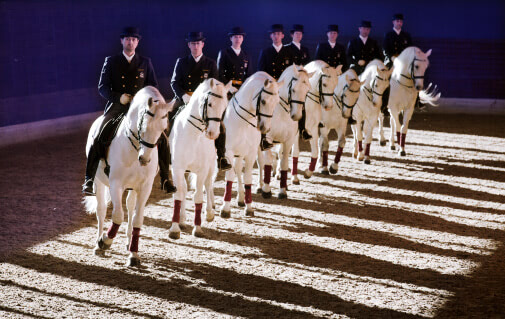

Premiere of the show ”A tale of Lipica”
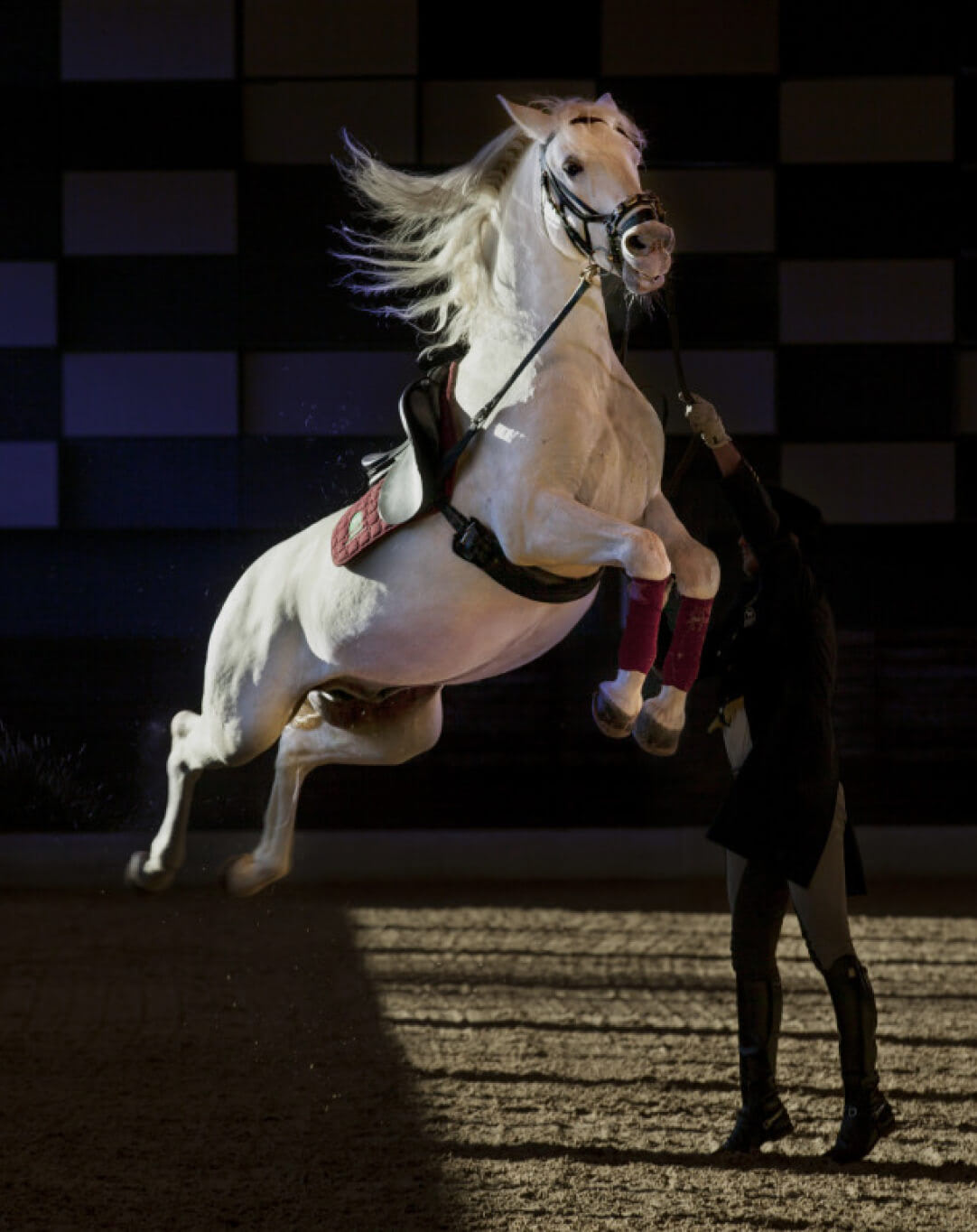

2017
December saw the premiere of the new show, A Tale of Lipica, which tells the extraordinary story of the Stud Farm’s heritage, the white Lipizzan horse, and its bond with the rider.
2018
The new Lipica Stud Farm Act was adopted in early 2018, and enabled the former public institution to be transformed into Holding Kobilarna Lipica, d.o.o. in September. The company Kobilarna Lipica d.o.o. was established soon afterwards to provide a public service with a concession from the Republic of Slovenia.
2020
The Lipica Stud Farm celebrated its 440th anniversary on 19 May 2020. We celebrated the grand event in September with a gala performance at the hippodrome.
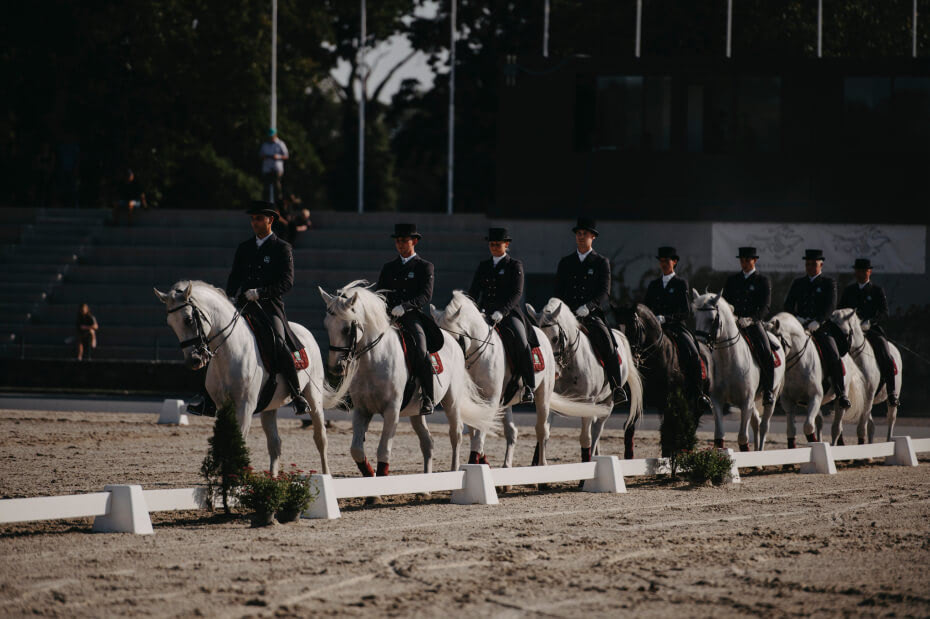

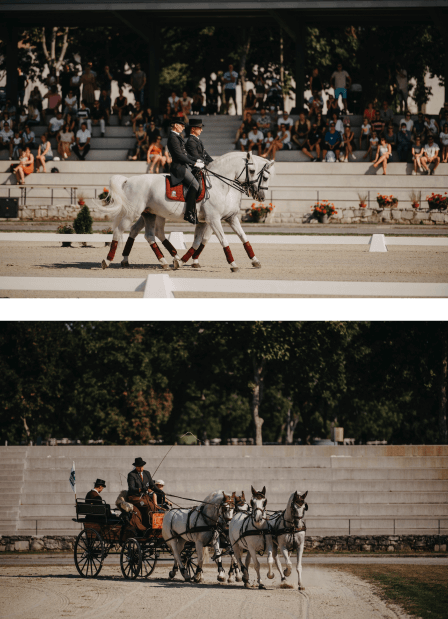

2021
Hotel Maestoso was ceremoniously opened in 2021. It is a luxurious hotel located in the heart of Lipica. It offers modernly equipped rooms, top-notch cuisine, and other lavish services for the perfect relaxation and comfort of its guests.
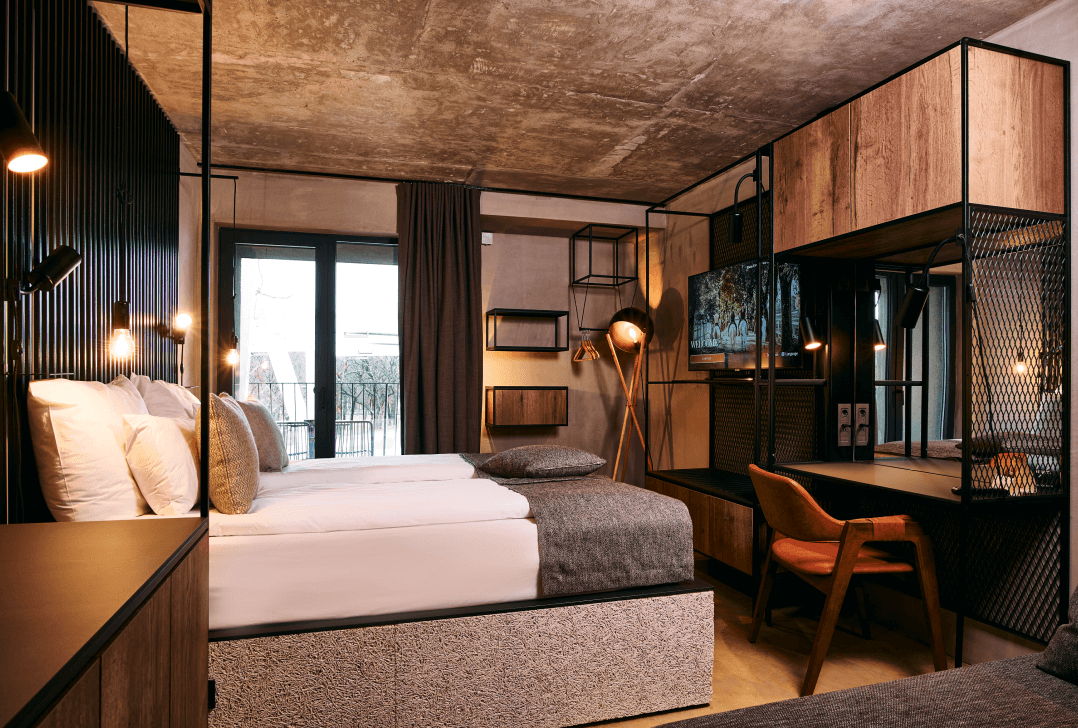

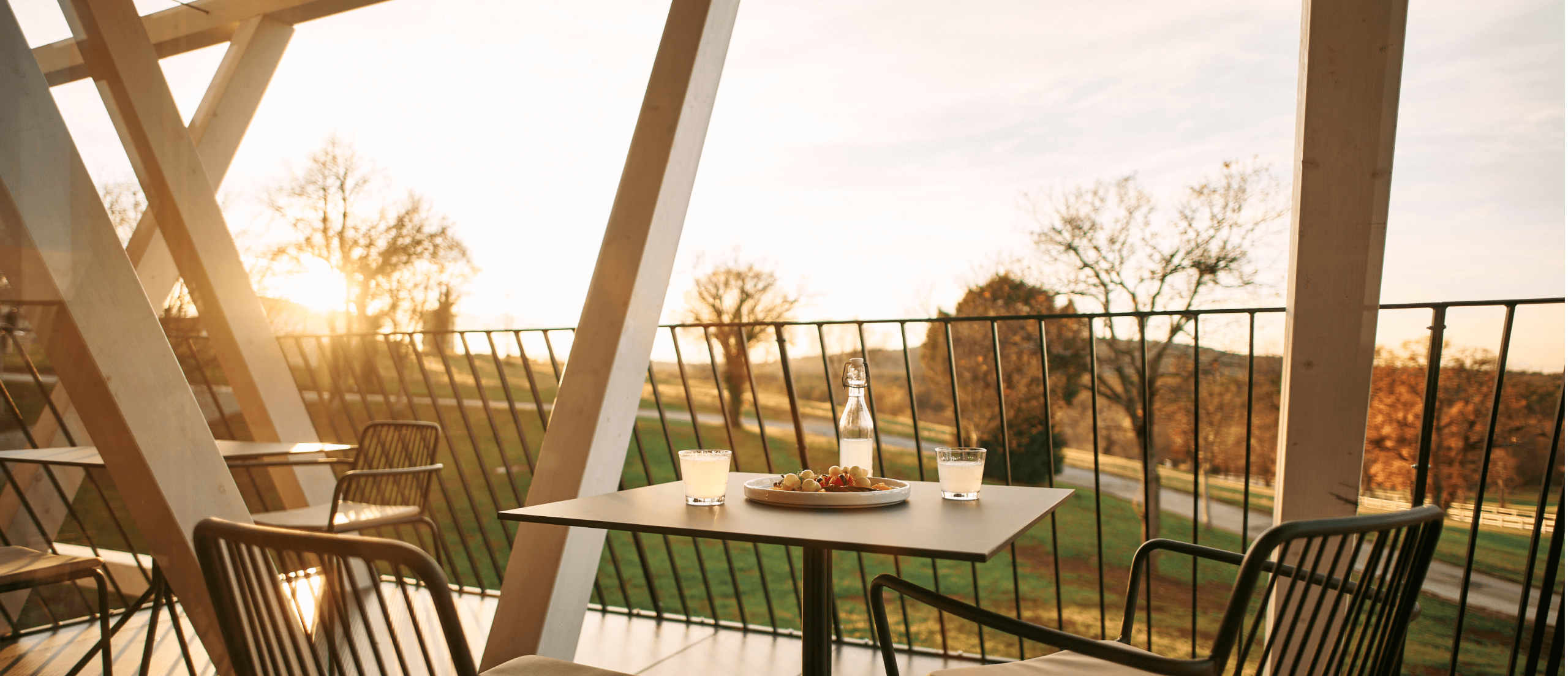

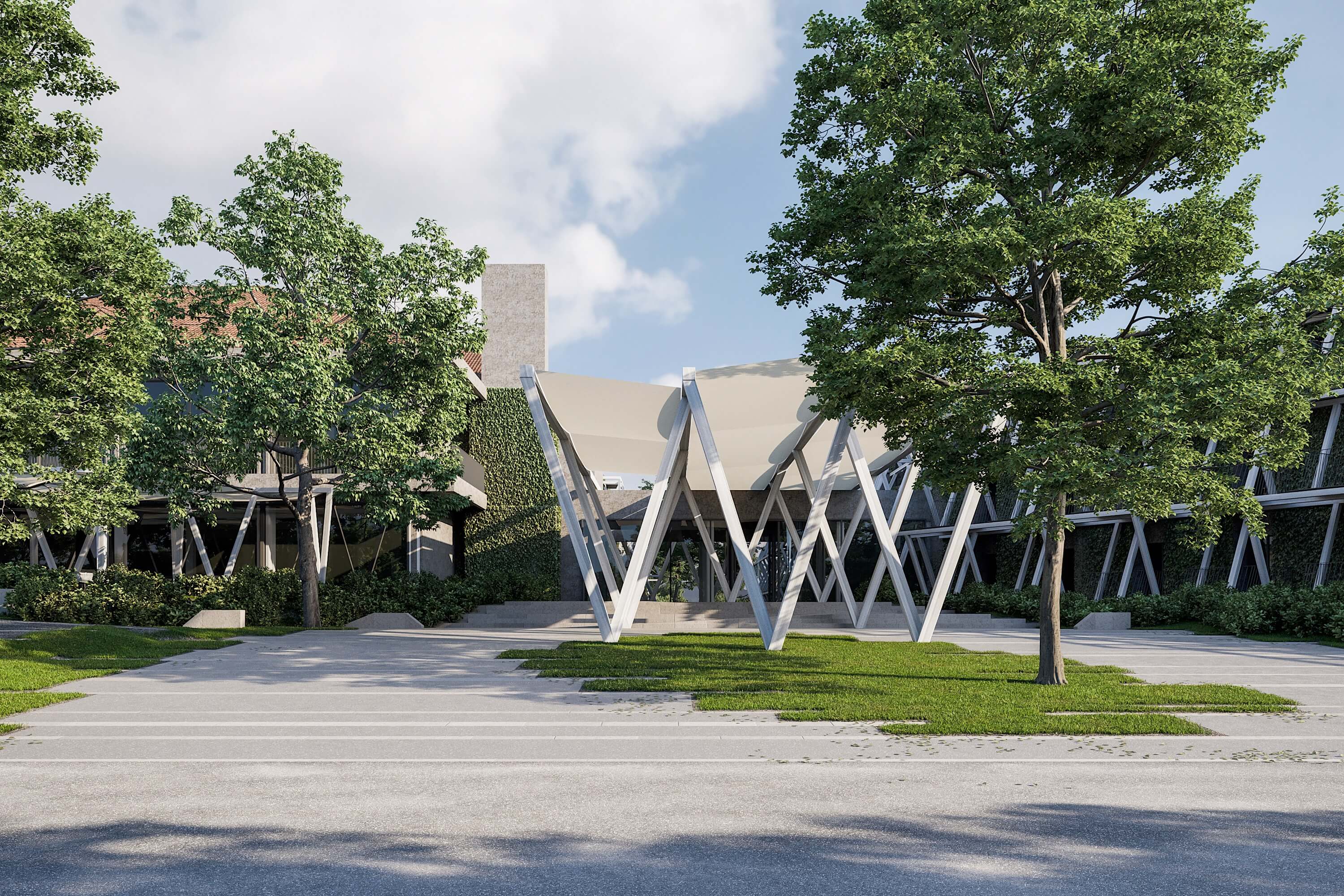

2021 Hotel Maestoso was ceremoniously opened.